William Kentridge
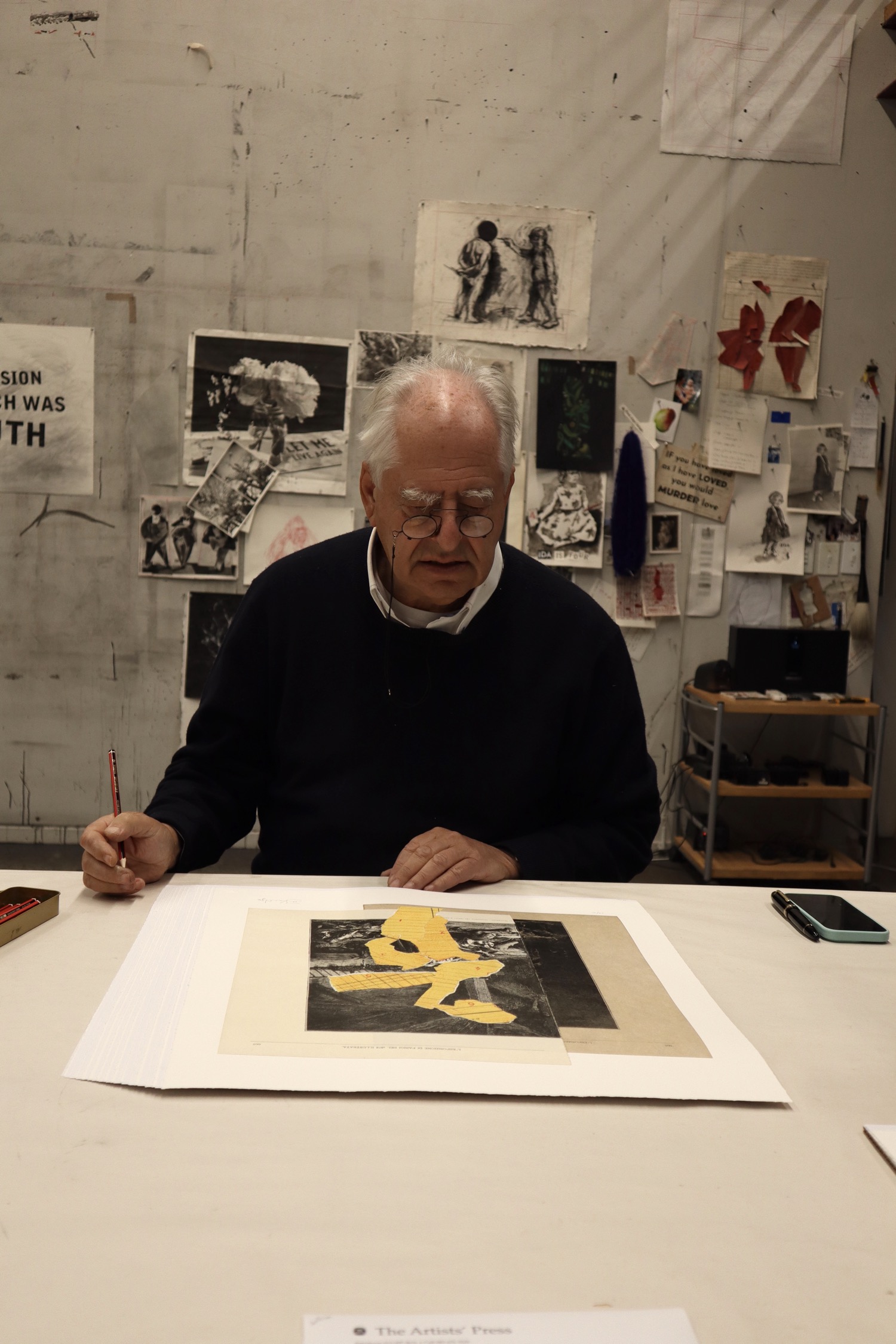
Four Songs for Autumn
Perhaps more than any other prints we have ever collaborated with Kentridge on, these two sets of lithographs, both derived from his recent theatrical productions, masterfully bring sheets of torn paper alive. The layers of collage and chine collé appear at once to be moving and still, both figures and objects, as papery as they are multidimensional.
There are a few essential features of William Kentridge’s studio: inky red and black notebooks, a table scattered with soft charcoal dust from an in-progress animation, a smooth fountain pen, a bizarre, fantastical moving contraption and almost without fail, a drawing of a coffee pot pinned up the wall.
Kentridge’s Four Songs for Autumn is a lithographic adaptation of his Paper Procession sculptures, a series which emerged whilst working on puppet figures and on costumes for performance. The starting point for the sculptures were flat collages made of water-colour stained pages torn from a 19th-century accounting book from Chiesa di San Francesco, Saverio, Palermo, Italy. He transformed these pieces into what he described as “something between a figure and a tree”, with the paper stuck to an armature. These paper models were transformed into striking aluminium structures that carefully retained the lightness of paper.
With Four Songs for Autumn, Kentridge adapts the sculptures back into torn sheets of paper but dexterously preserves their three-dimensional form. With their vivid shades of red and yellow, these lithographs represent Kentridge’s experimental process coming full circle with a return to torn paper that pushes the boundaries between two and three-dimensional artwork.
With Learn the ABC, Kentridge makes a larger-than-life gesture to a recurrent motif in his work. The coffee pot figure in the lithograph is a central motif from his ongoing production, The Great YES, The Great NO. The phantasmagoric show, mixing history and fiction, re-imagines the historical 1941 journey of the ship the Capitaine Lemerle from Marseille to Martinique, carrying refugees escaping Vichy France. In a surrealist juxtaposition, actors obscure their faces with masks of coffee pots, becoming representations of the French bourgeoisie on board the ship. As Alain Berland writes in a stellar review of the show: “A mask representing the metal top of a coffee pot becomes the metonymy of a product, coffee, whose prosperity has been ensured by the slave trade since the early 17th century.” From early animations to his quintessential processions, previous lithographs, and a video series, “Self-Portrait as a Coffee Pot” Kentridge turns this everyday object into an evocative symbol with self-referential ingenuity. Reflecting on his creative processes Kentridge says: “So you start thinking of a picture of the whole universe and you end up with a…coffee pot.”
This large print, an assembly of forty panels, took us more than eight months of intensive work to edition.
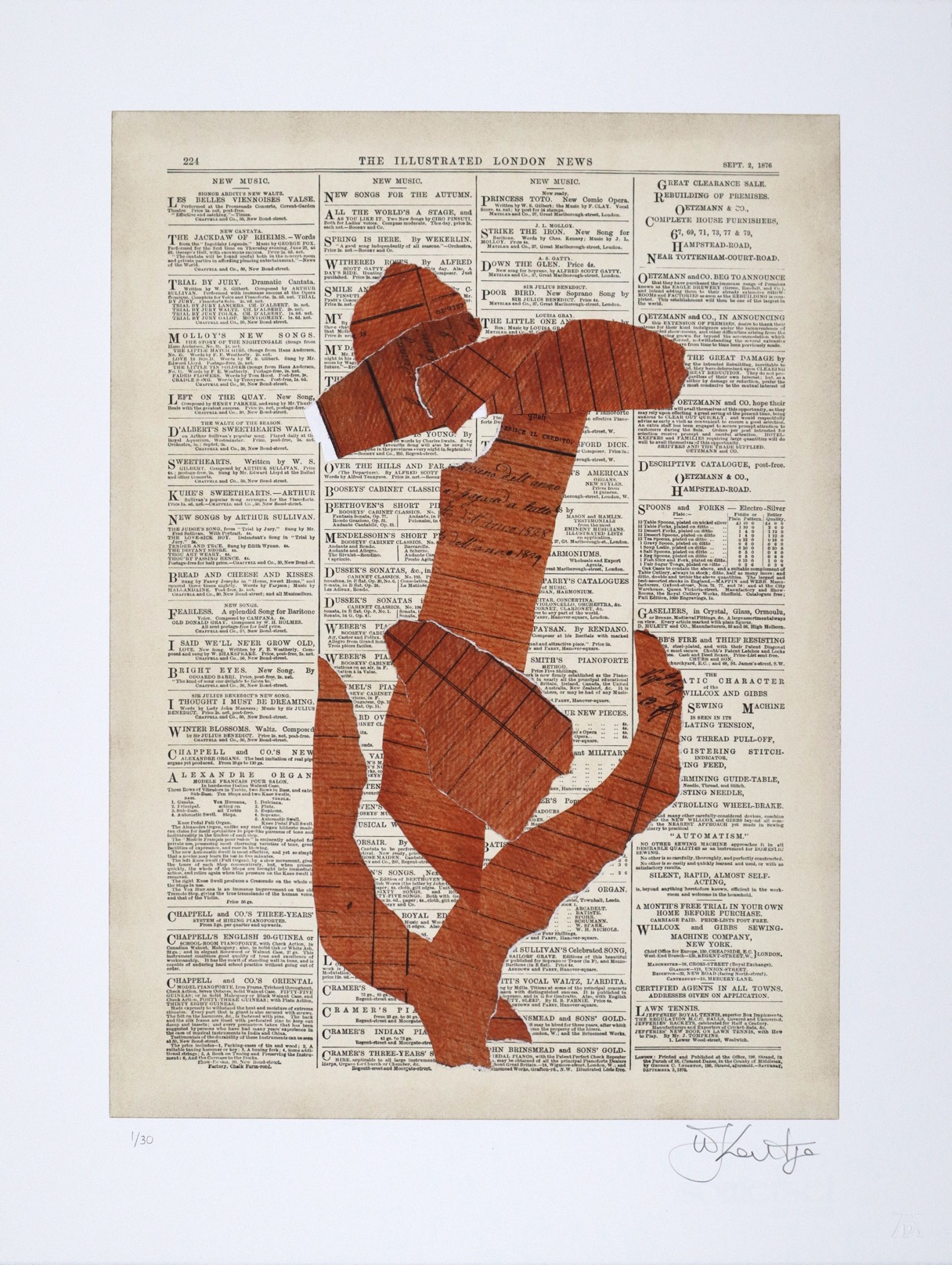
Title: Silent, rapid, almost self-acting
Medium: Six colour chine collé lithograph with collage and staining
Paper size: 50.8 x 38.2 cm
Image size: 40.2 x 28.9 cm
Edition size: 30
Price on request

Detail showing hand torn paper edges and collage.
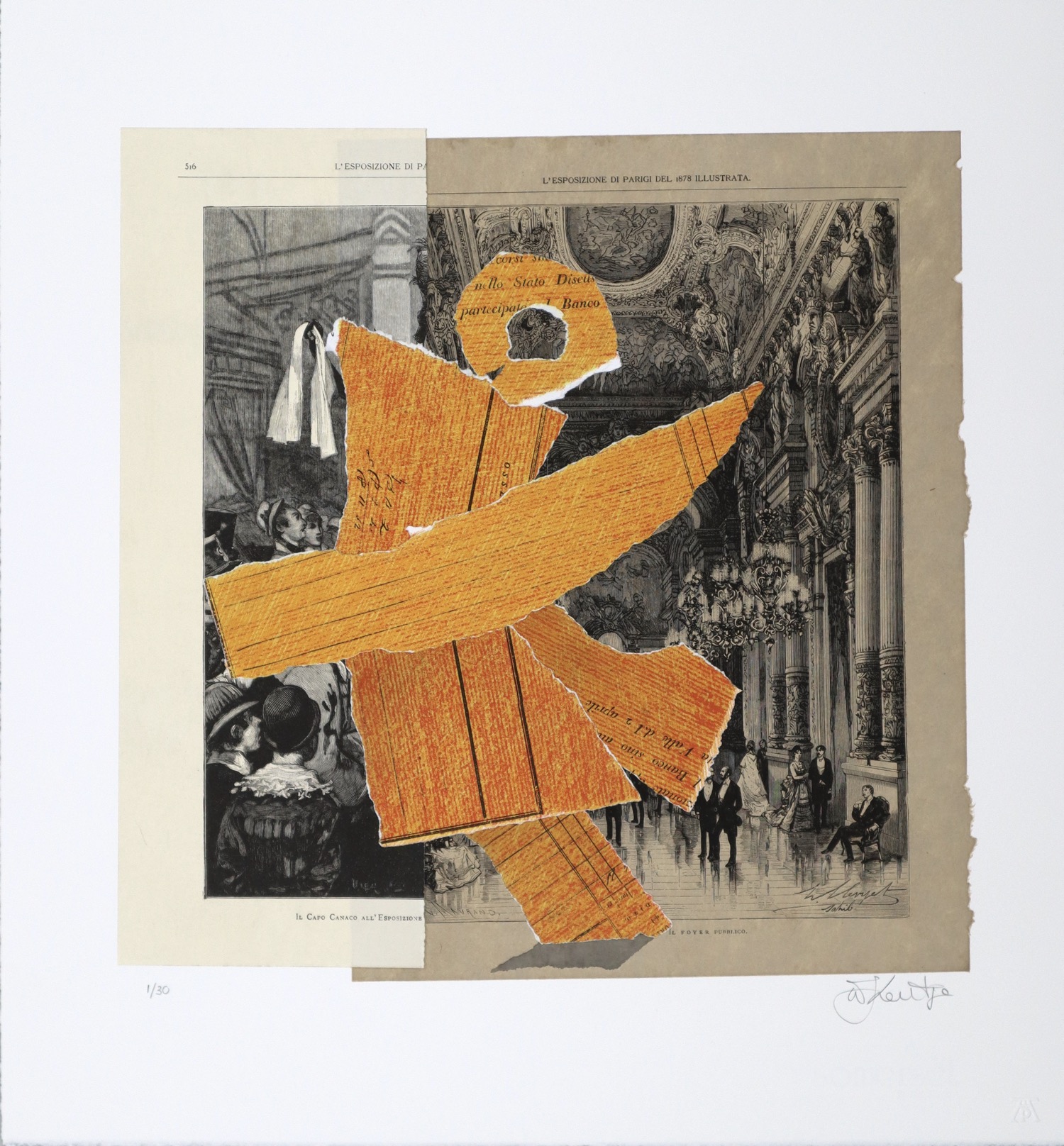
Title: Il Capo Canaco
Medium: Five colour chine collé lithograph with collage and staining
Paper size: 50.8 x 47 cm
Image size: 37.7 x 37.7 cm
Edition size: 30
Price on request
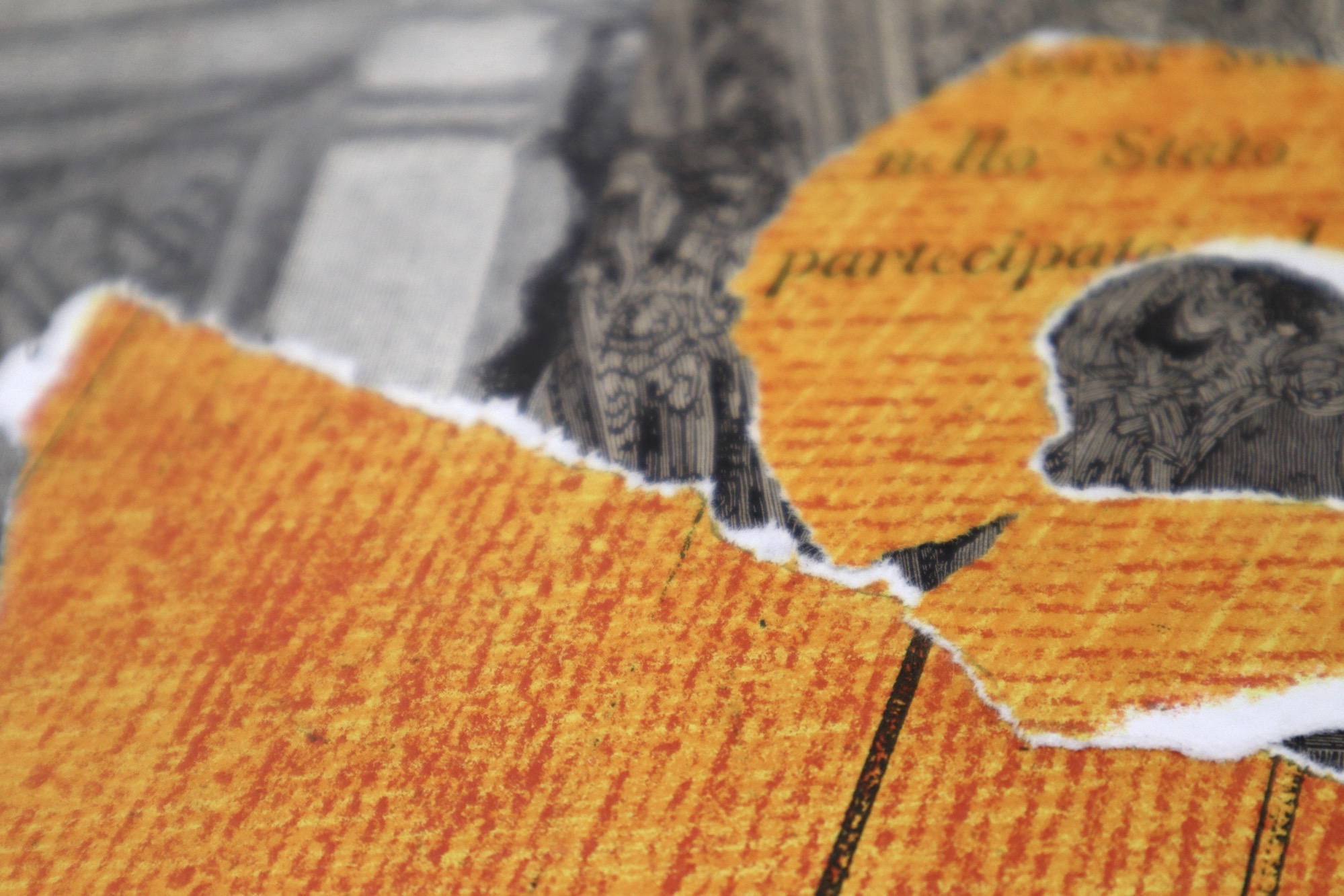
Detail showing hand torn paper edge and collage.
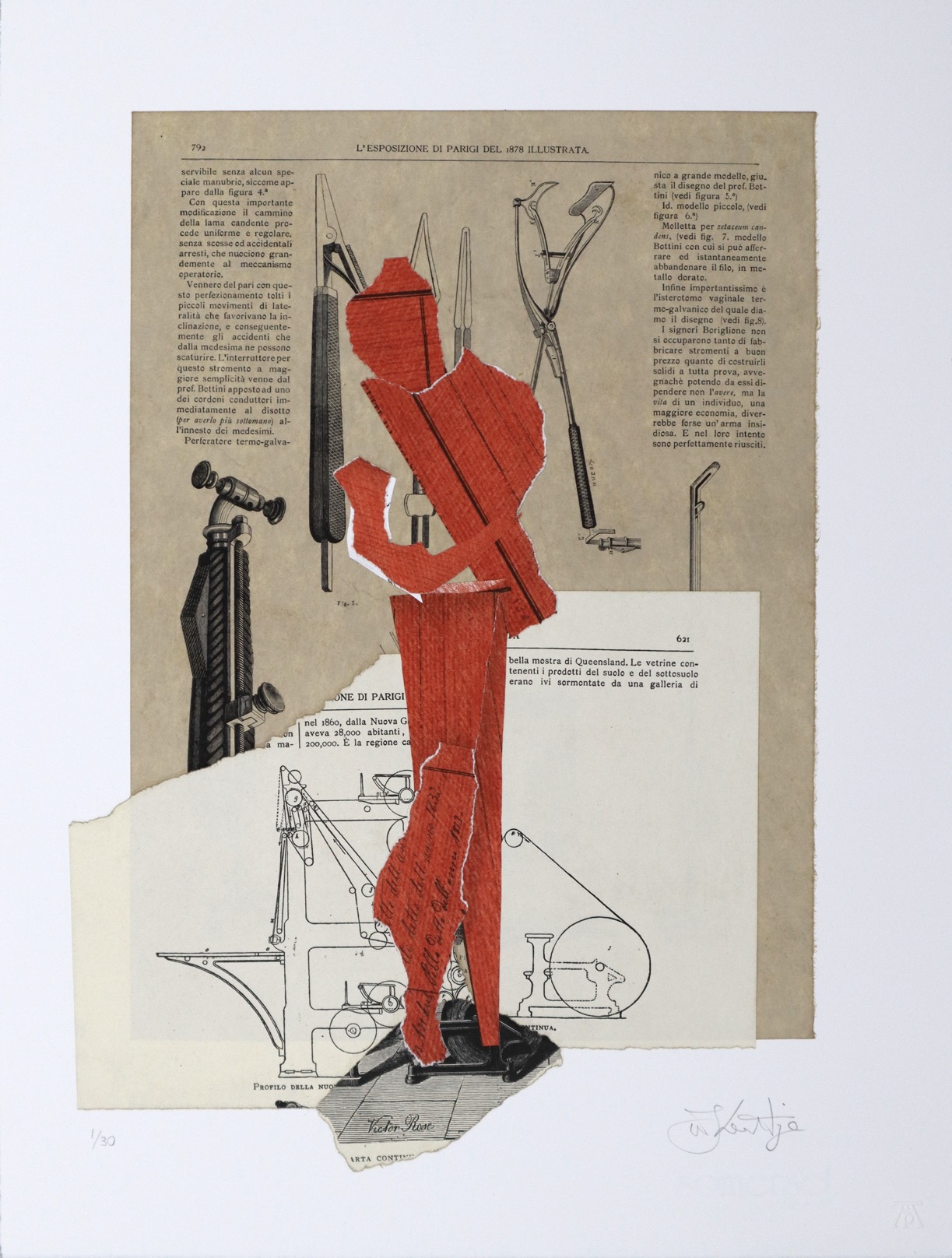
Title: Questa importante modificazione
Medium: Five colour chine collé lithograph with collage and staining
Paper size: 50.8 x 38.2 cm
Image size: 42 x 29.7 cm
Edition size: 30
Price on request
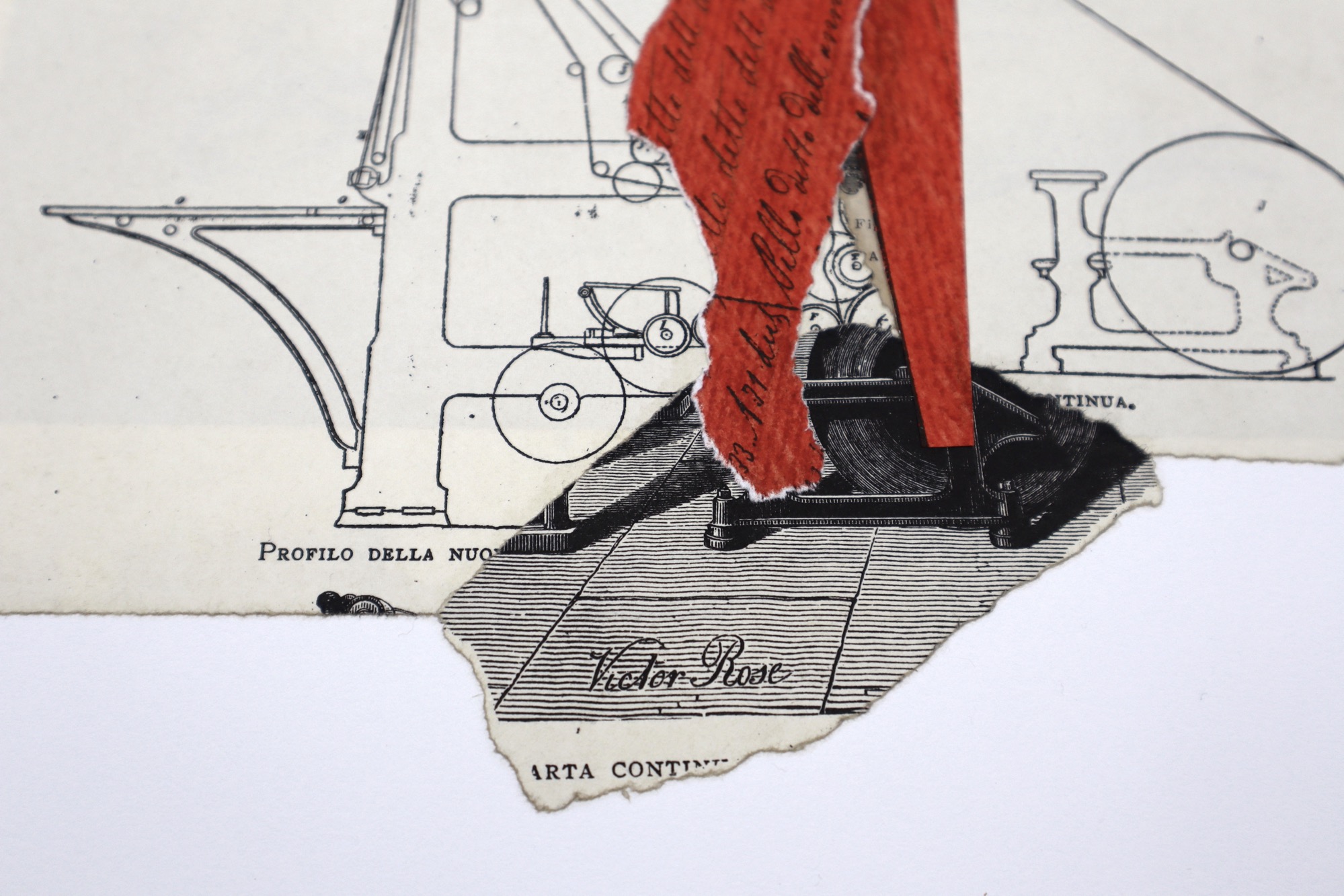
Detail showing hand torn paper edges and collage.
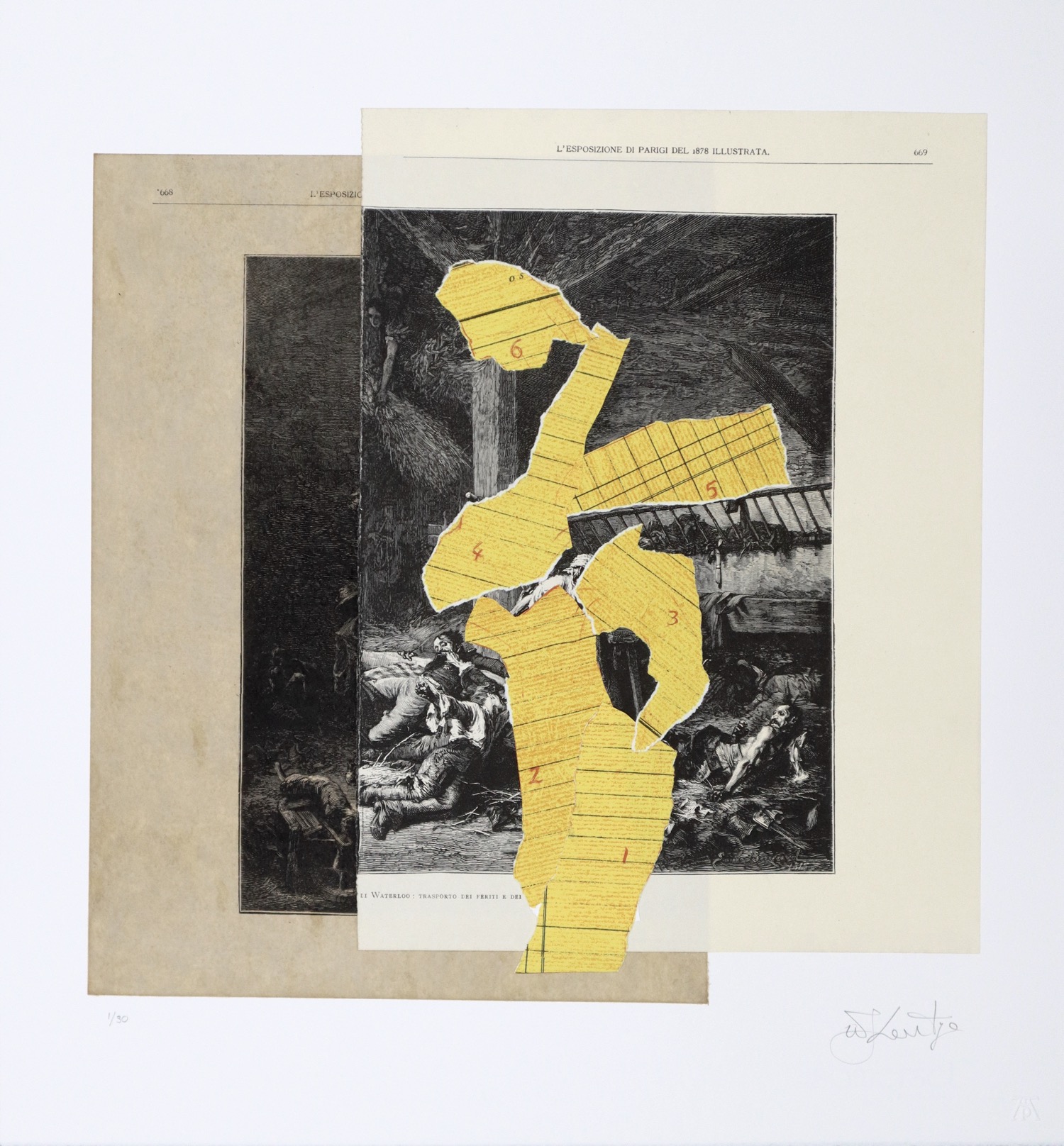
Title: Waterloo
Medium: Four colour chine collé lithograph with collage and staining
Paper size: 50.8 x 47 cm
Image size: 39.2 x 39 cm
Edition size: 30
Price on request
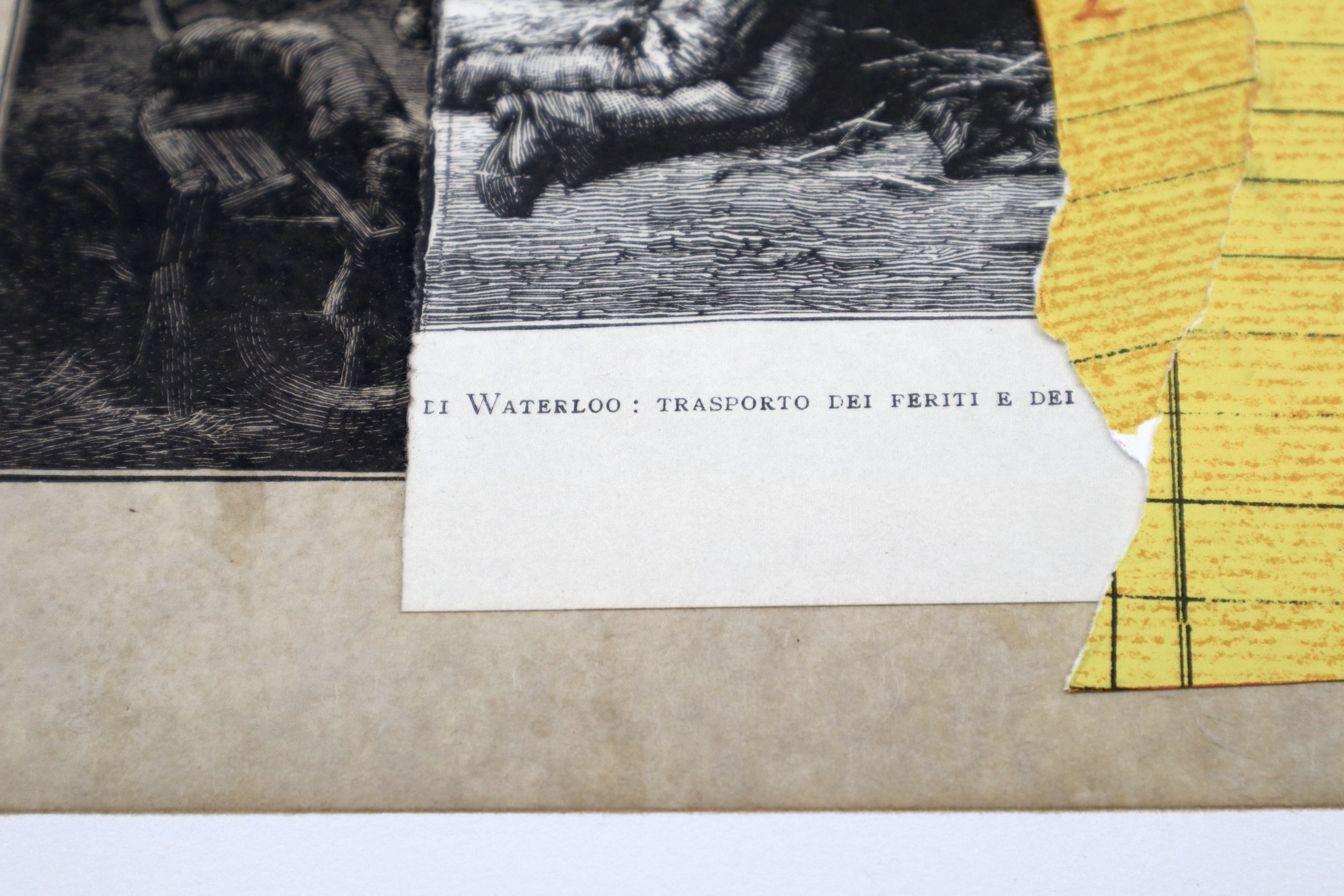
Detail showing hand torn paper edge, staining and collage.
Learn the ABC
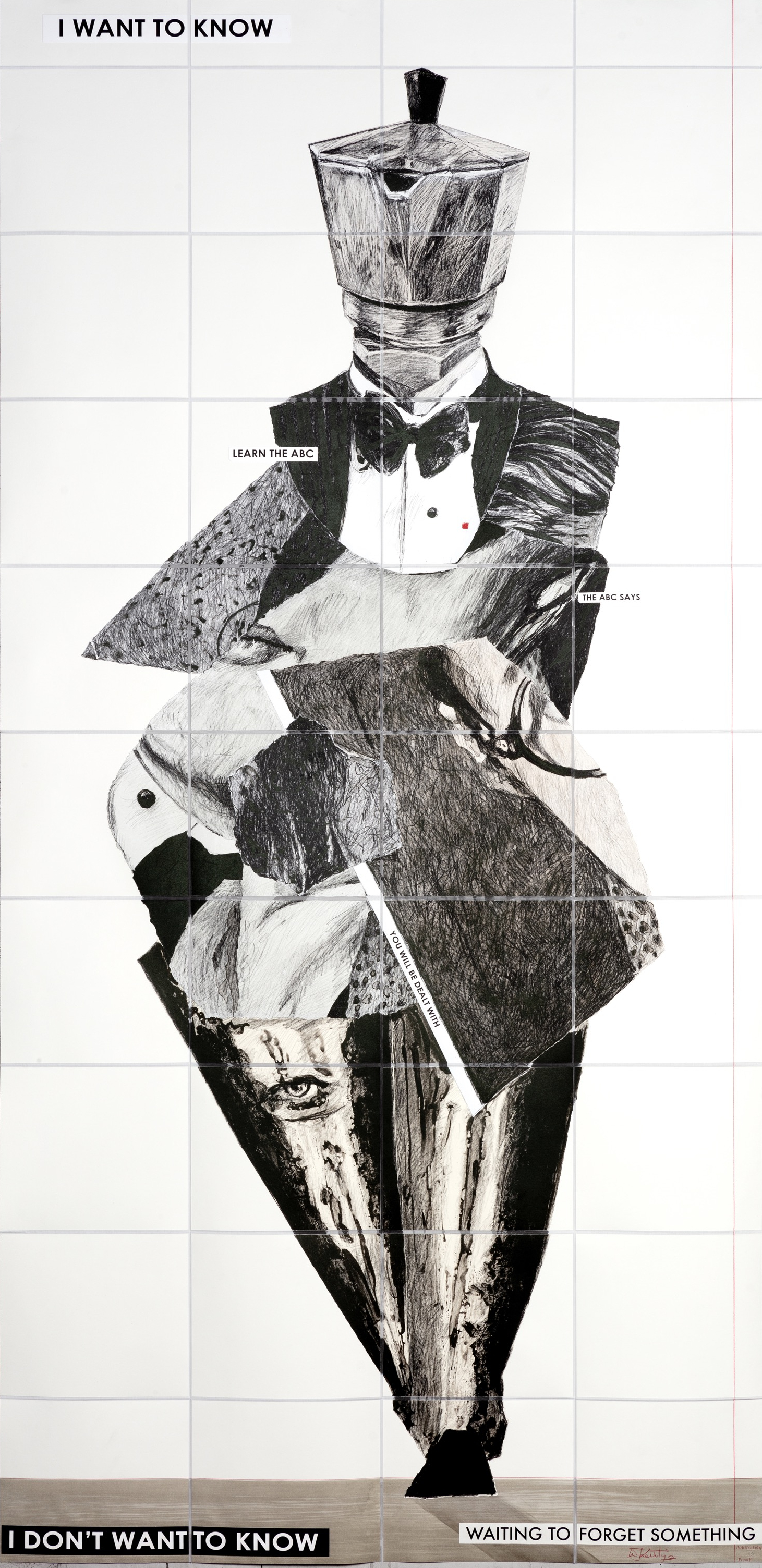
Title: Learn the ABC
Medium: Three colour lithograph with collage, staining and hand colouring
Size: 228.3 x 112 cm (made up of 4 panels 10 x 27.7 cm and 36 panels 23.7 x 27.7 cm)
Edition size: 20
Price on request
Below is the clam shell box that houses the print.
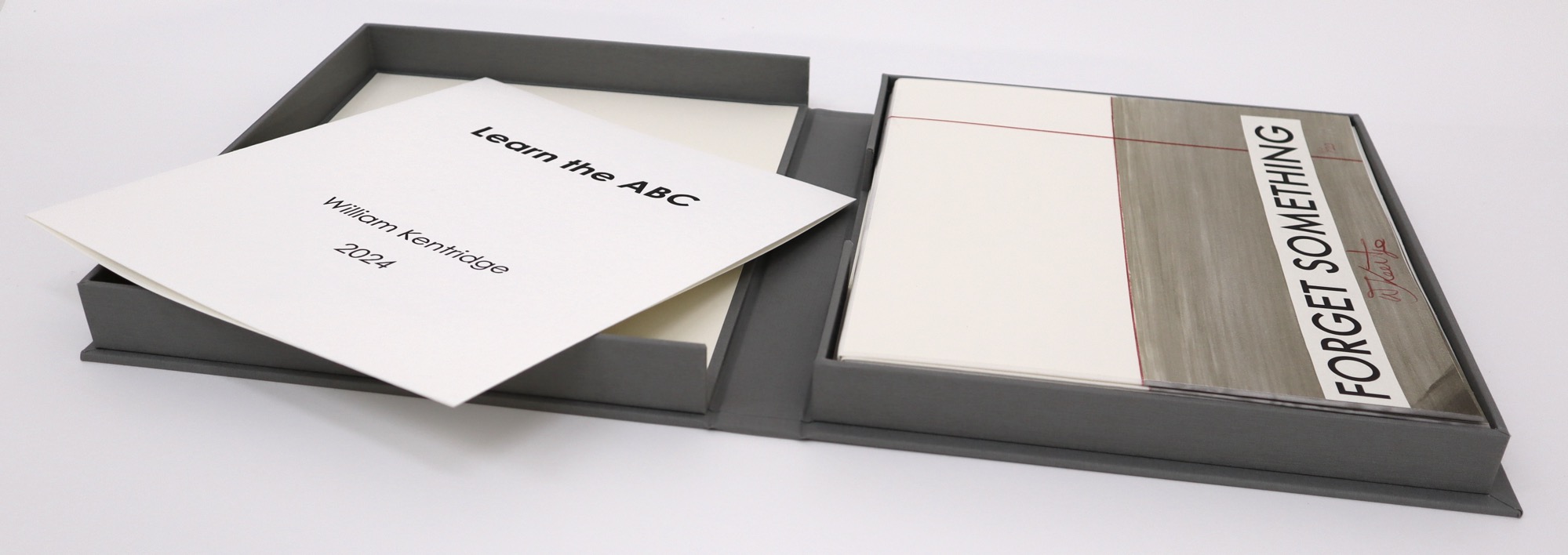
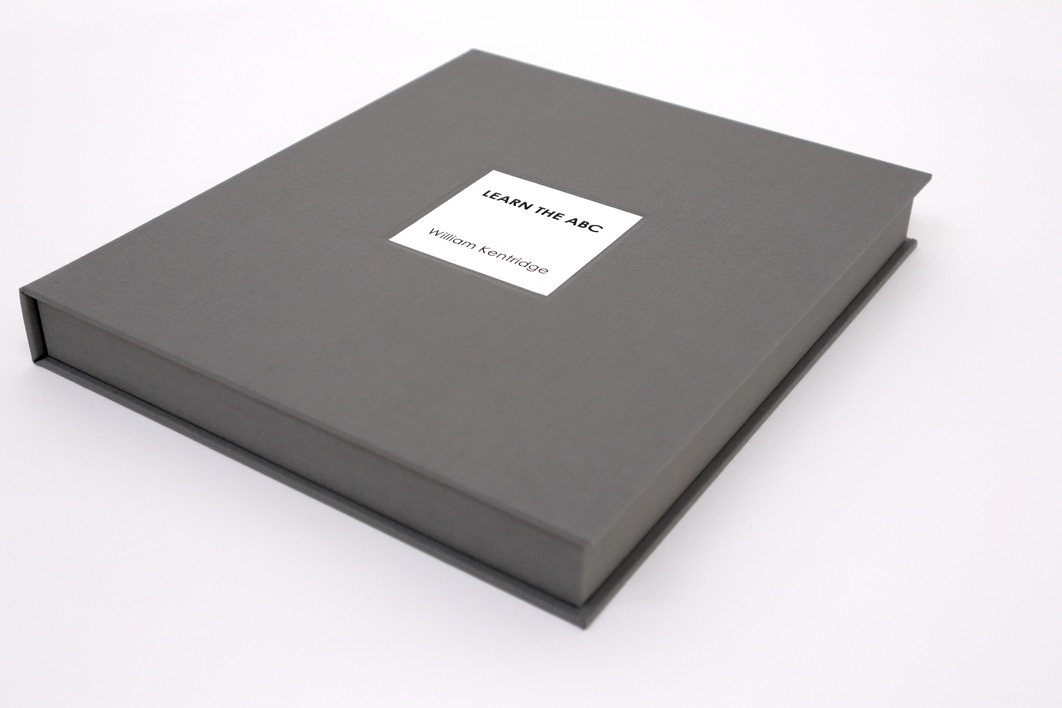
Portraits for Shostakovich Symphony No.10 in E Minor, Opus 93
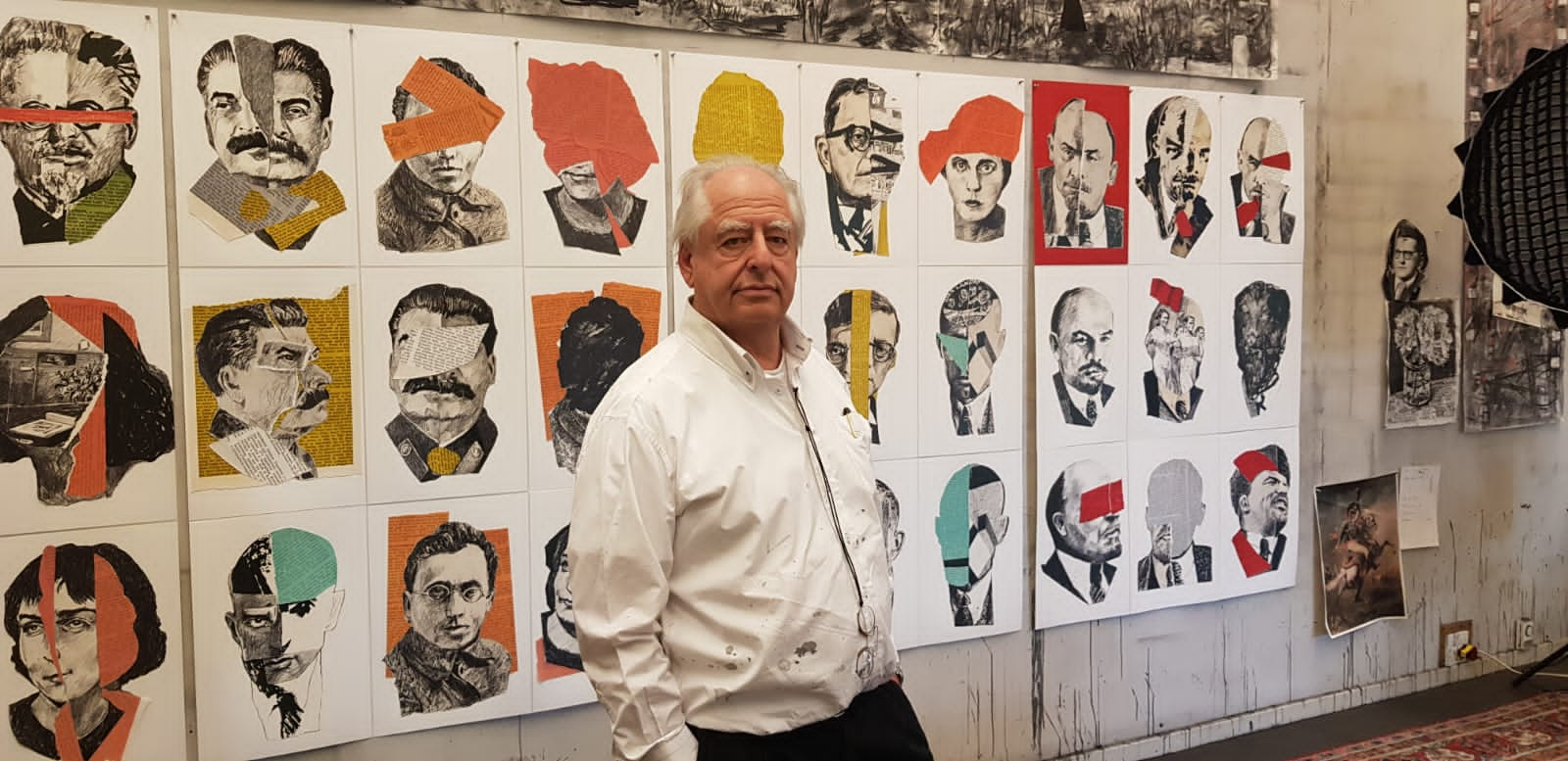
William Kentridge with the Shostakovich No.10 collaged lithographs in his studio.
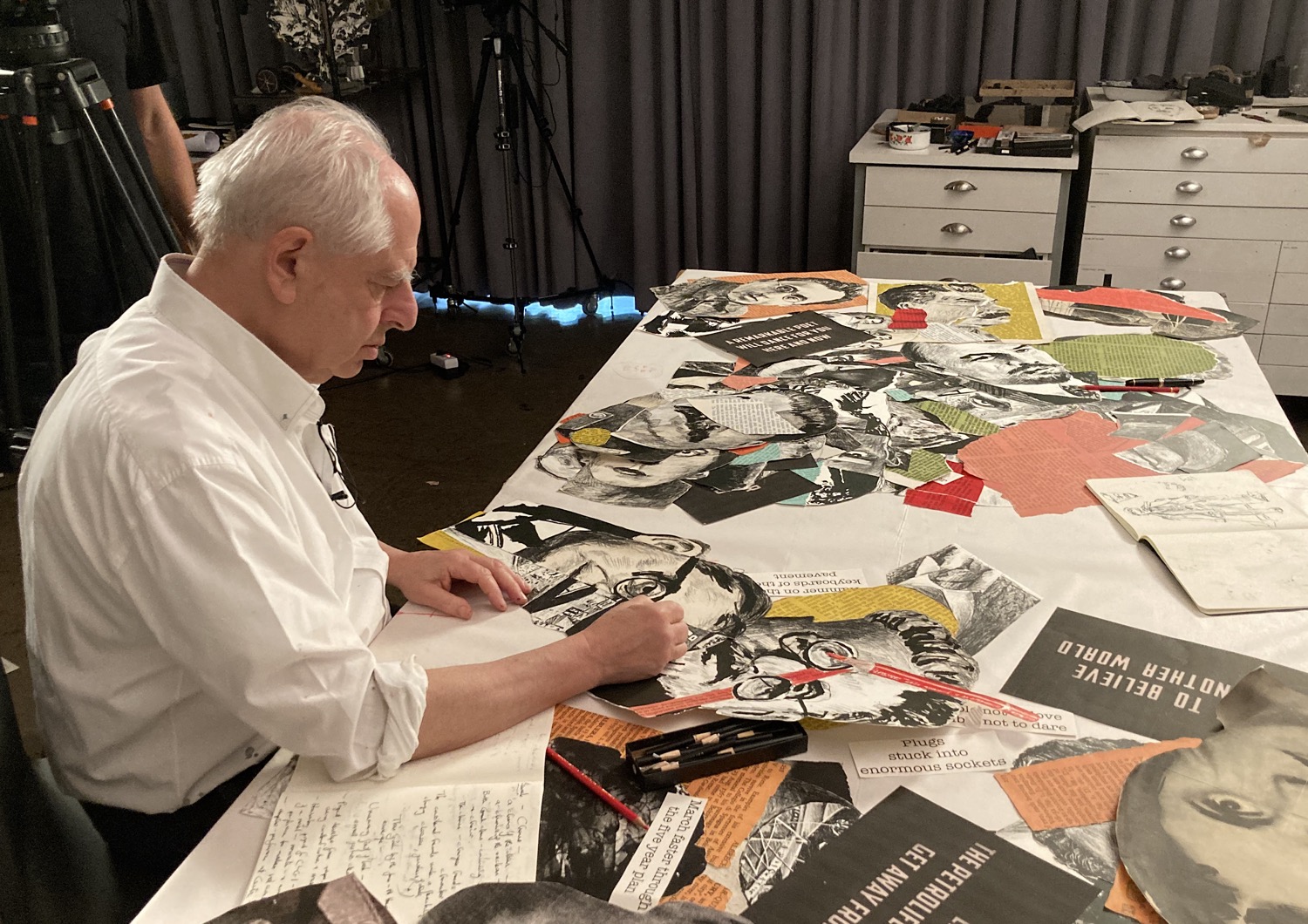
William Kentridge working on portrait proofs in his studio.
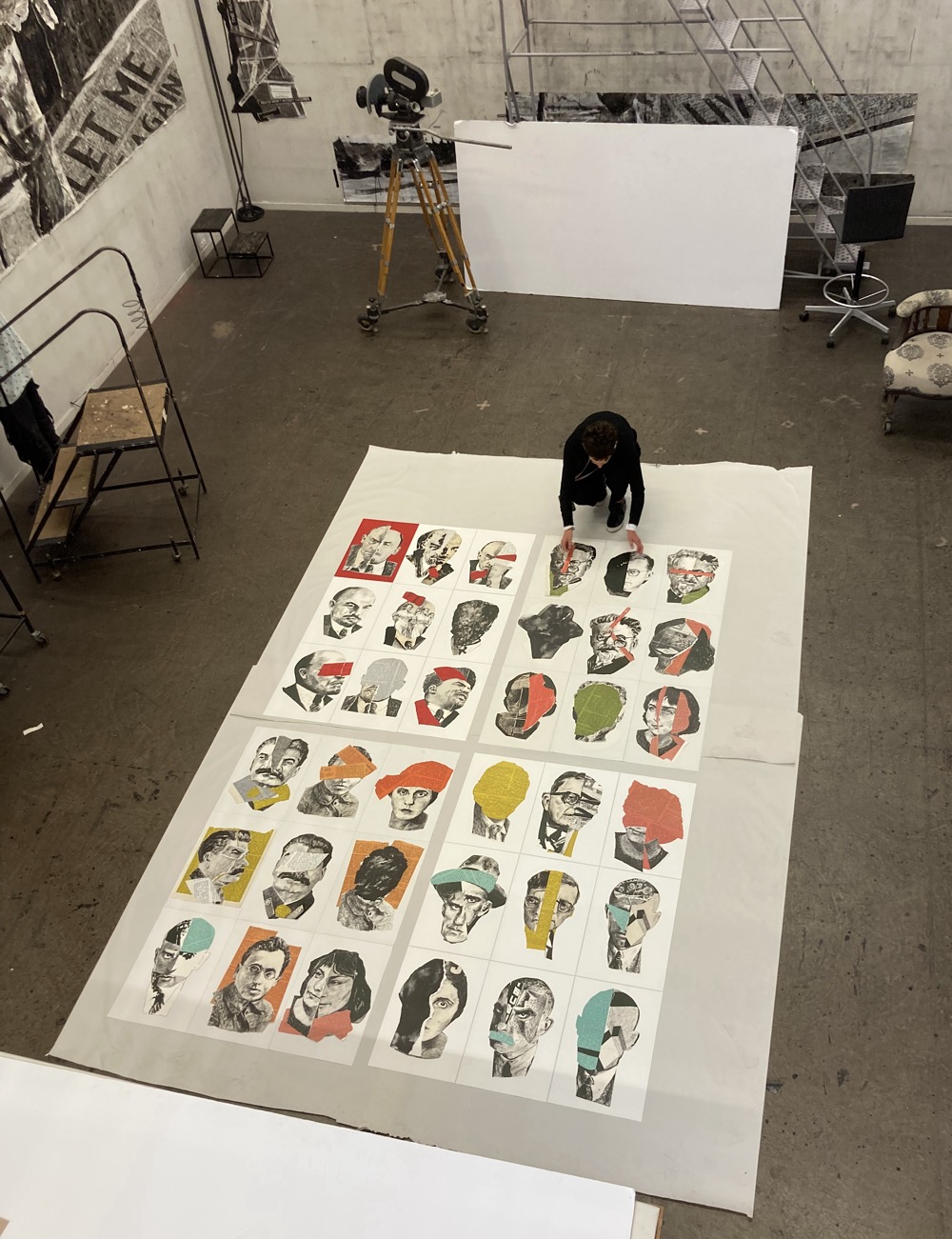
Final layout of the Portraits for Shostakovich in William Kentridge's studio.
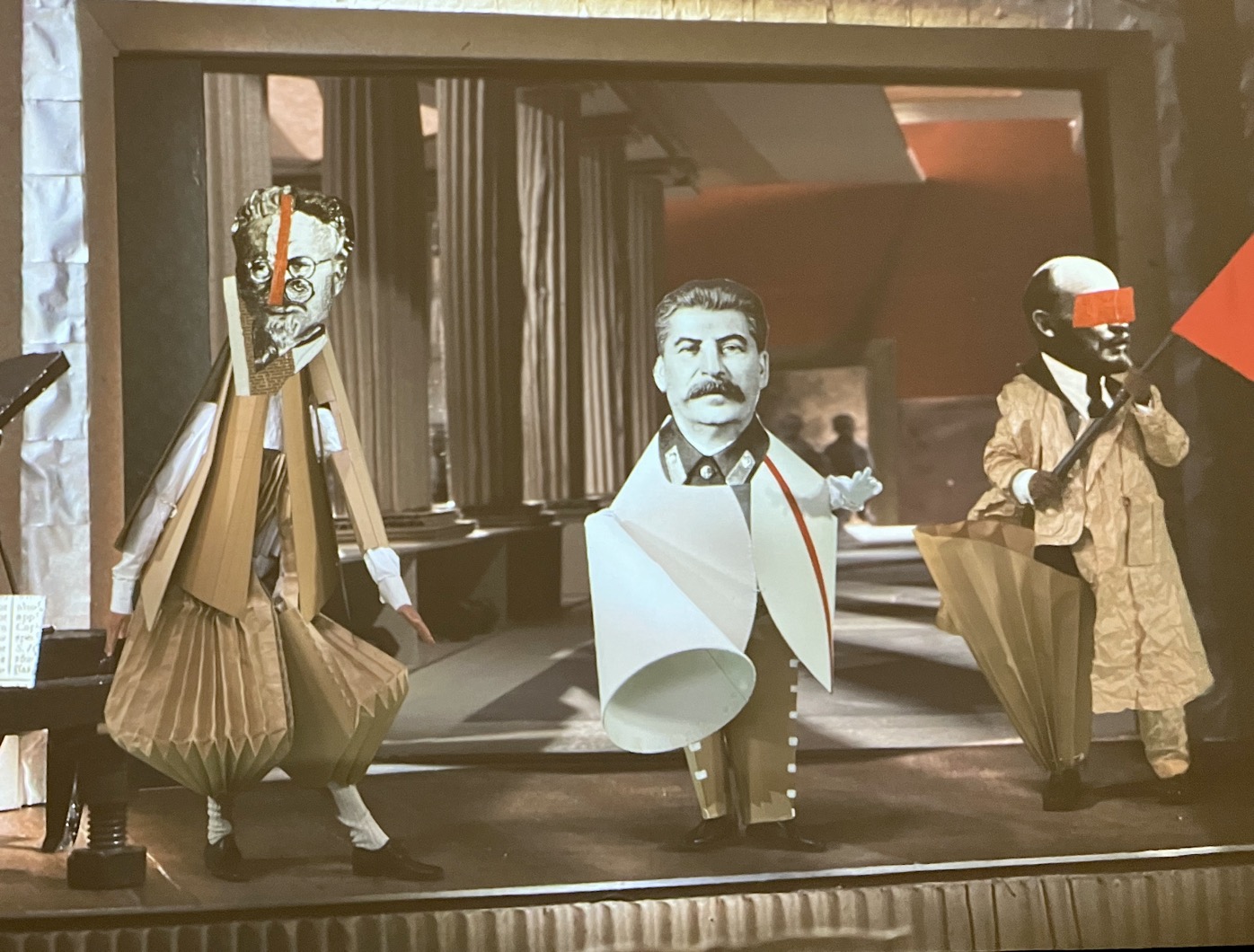
Screen grab from Oh To Believe in Another World showing how the lithographs were used in the performance.
The Lucerne Symphony Orchestra in Switzerland commissioned William Kentridge to make a film to accompany the live performance of Shostakovich’s Symphony No. 10 in E minor, Op.93 in June 2022. The film is titled Oh To Believe in Another World.
“The central characters of the film are Lenin, Trotsky and Stalin; Shostakovich and his student Elmira Nazirova (about which there are different theories regarding her relationship with Shostakovich and the 10th Symphony and whether her name is embedded into some of the key signatures of the symphony); Mayakovsky and his lover Lily Brik. These characters appear as puppets, but are also performed by actors inside of puppets. The form is one of collage, and the larger proposition is that one needs to understand history as a form of collage. The artistic medium is a way of thinking about the historical events.
The story of Shostakovich and his complicated relationship to the state in the Soviet Union, from its early days just after the 1917 revolution, all the way through to Stalin’s death in 1953, provides the material for thinking visually about the trajectory that Shostakovich had to follow, from the early days of the Soviet Union to the writing of the symphony.
This is a retrospective look at the four decades of the 1920s, 30s, 40s, and 50s, from the perspective of 1953 when both Stalin died and the first performance of the symphony was presented. In the 1920s there was the death of Lenin; in the 1930s the suicide of Mayakovsky; in the 1940s, the assassination of Trotsky; in the 1950s the death of Stalin – and here we are, almost 70 years later. The report that remains of these decades is in the music of Shostakovich, the one who against expectation got away, and survived.” William Kentridge 2022
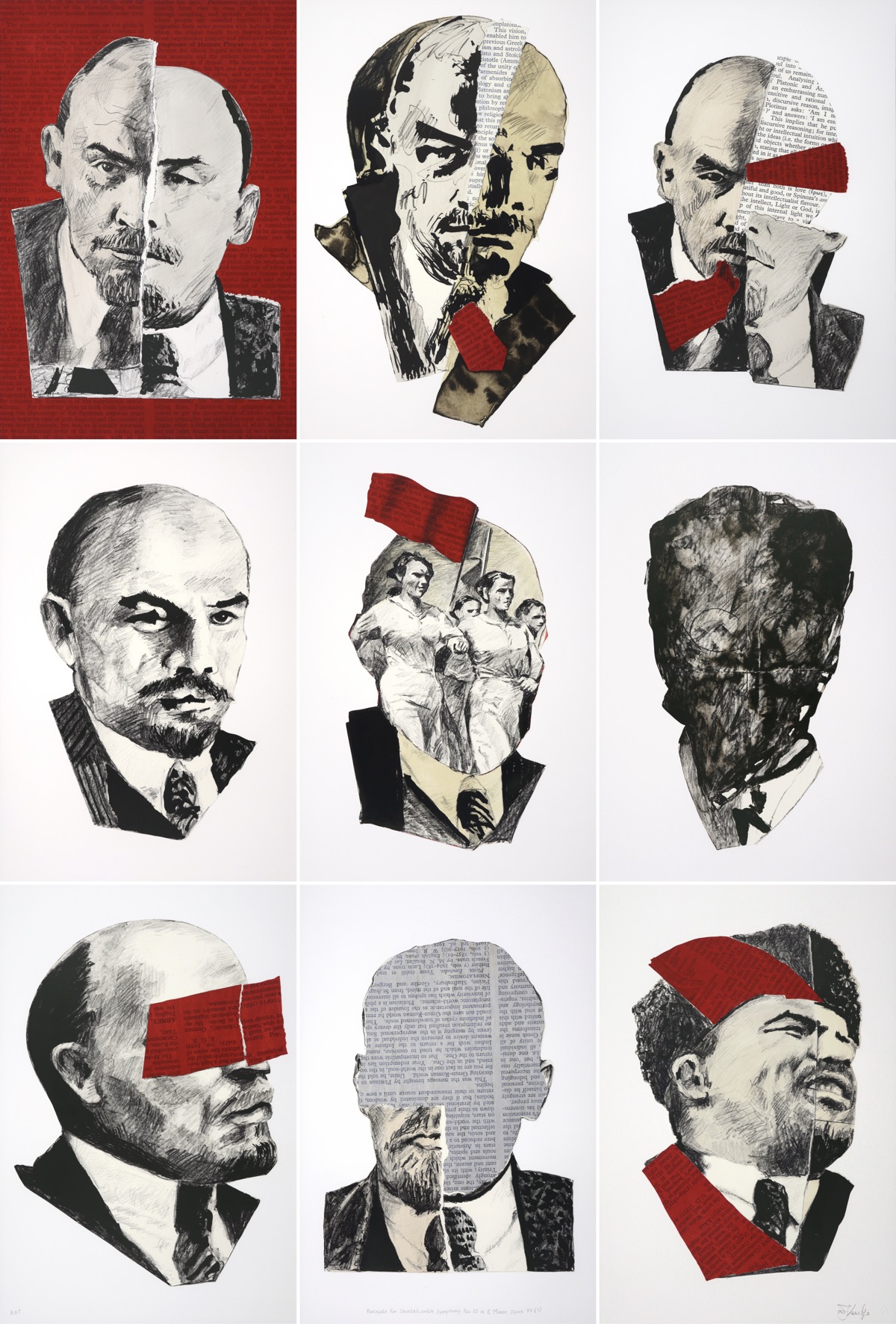
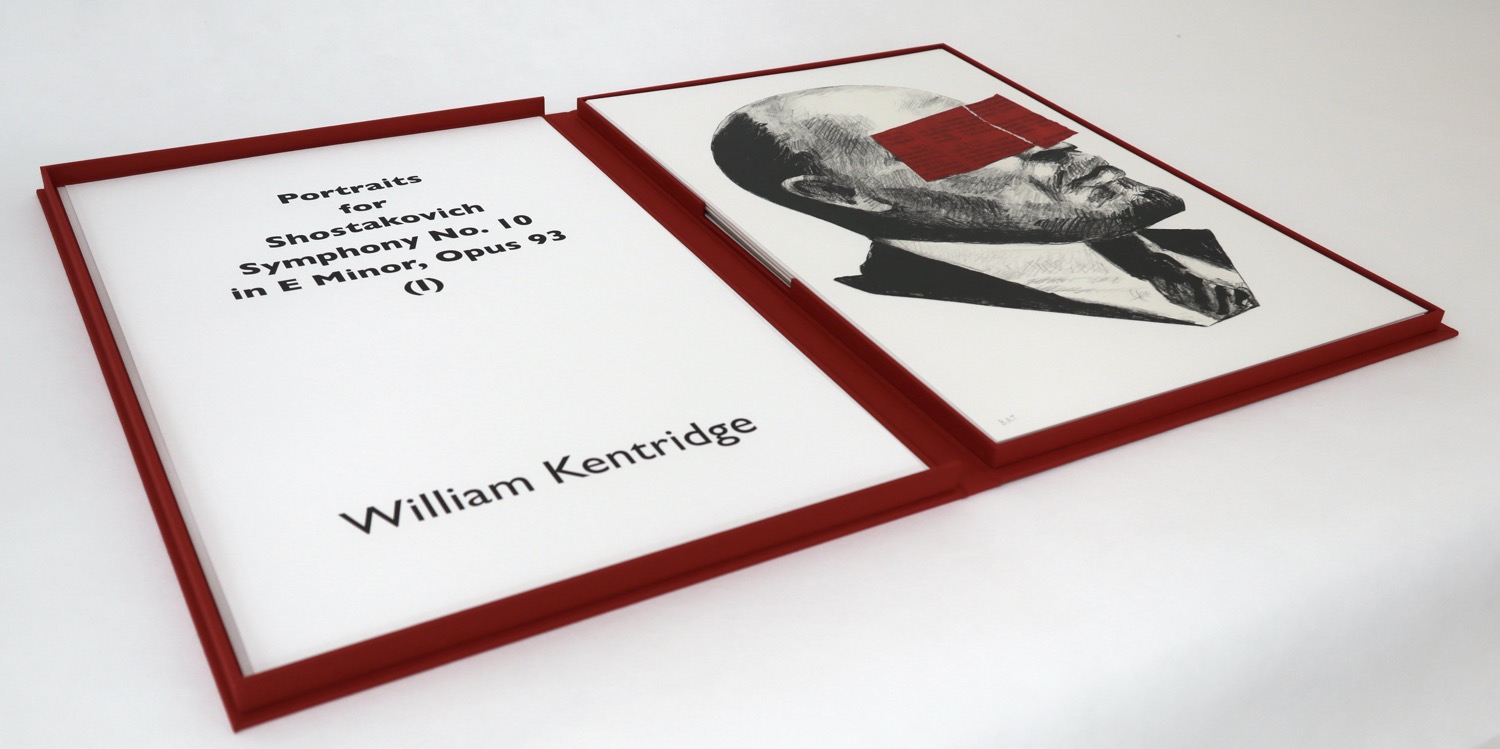
Title: Portraits for Shostakovich Symphony No.10 in E Minor, Opus 93 (I)
Medium:
Multiple colour lithograph, collage and chine collé in nine panels
adhered to cotton fabric, presented in a clamshell box
Size: 165.4 x 111.5 cm
Edition size: 20
Price on request
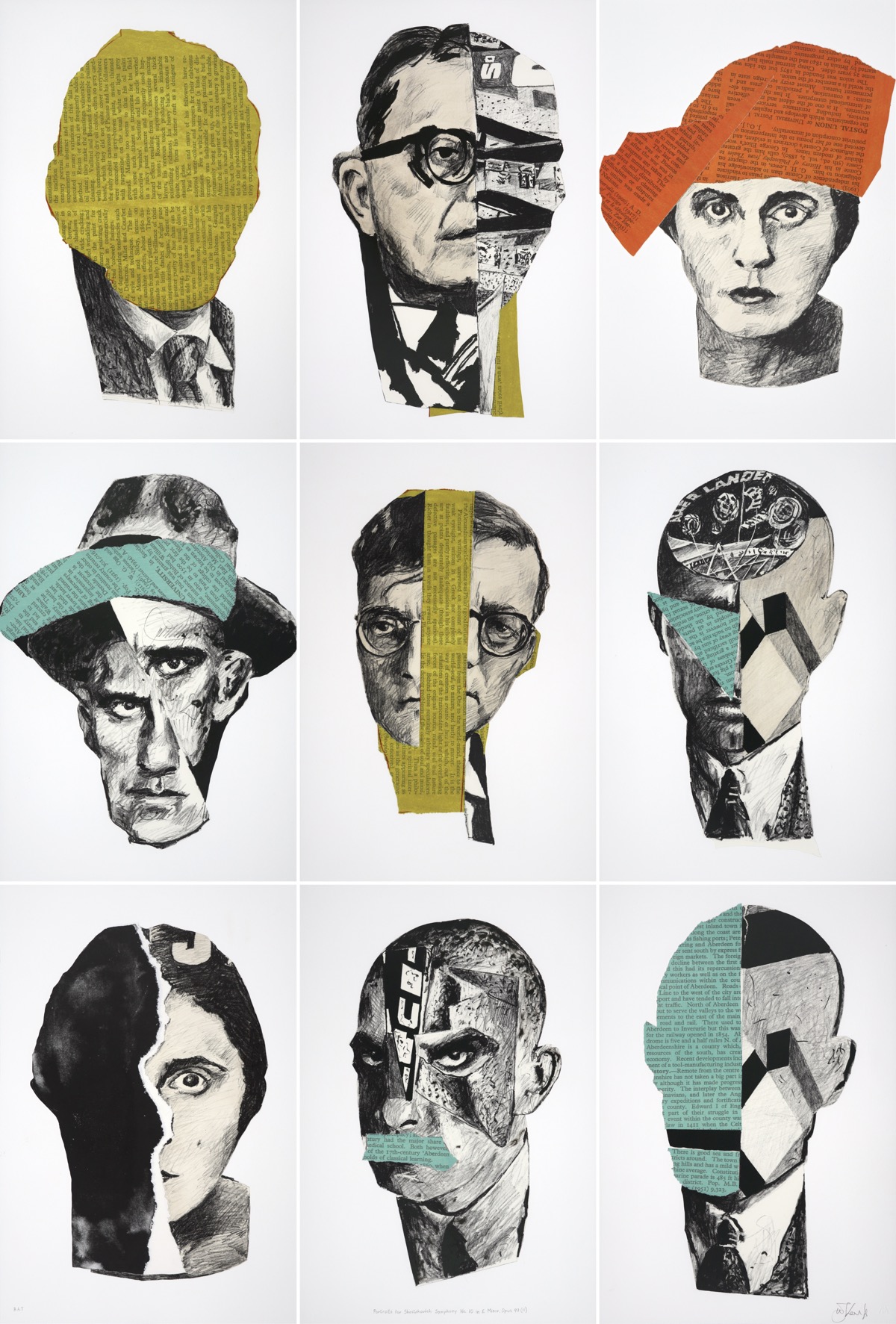
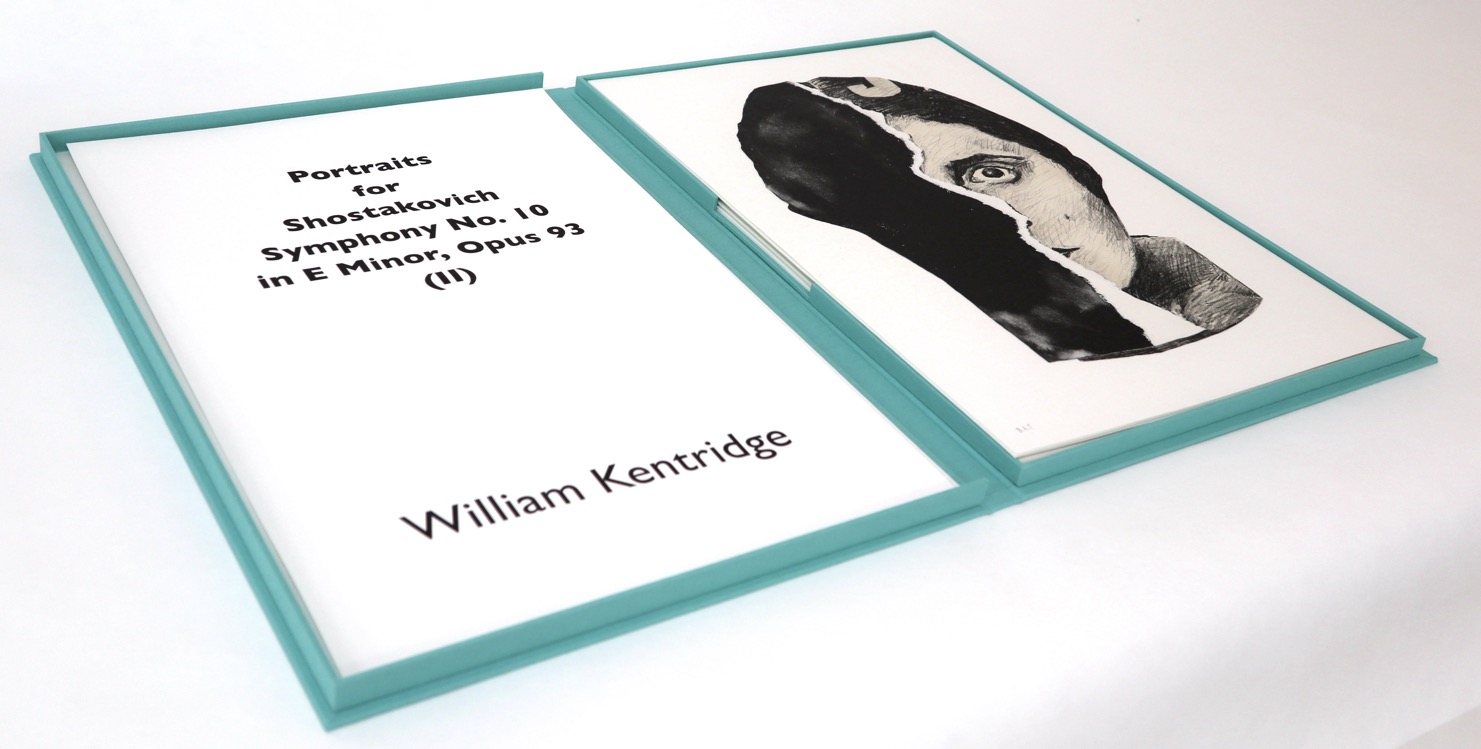
Title: Portraits for Shostakovich Symphony No.10 in E Minor, Opus 93 (II)
Medium: Multiple colour lithograph, collage and chine collé in nine panels adhered to cotton fabric presented in a clamshell box
Size: 165.4 x 111.5 cm
Edition size: 20
Price on request
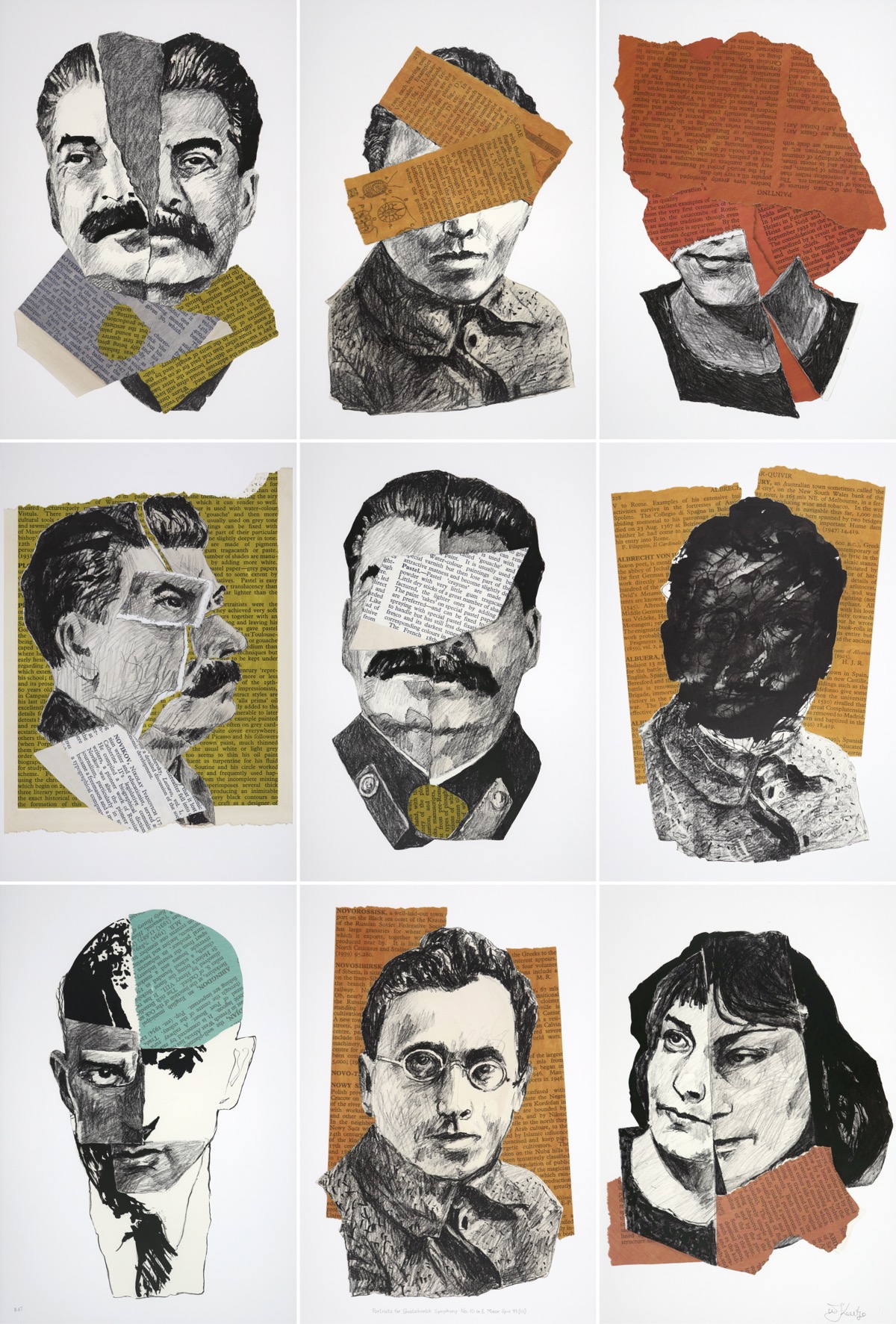
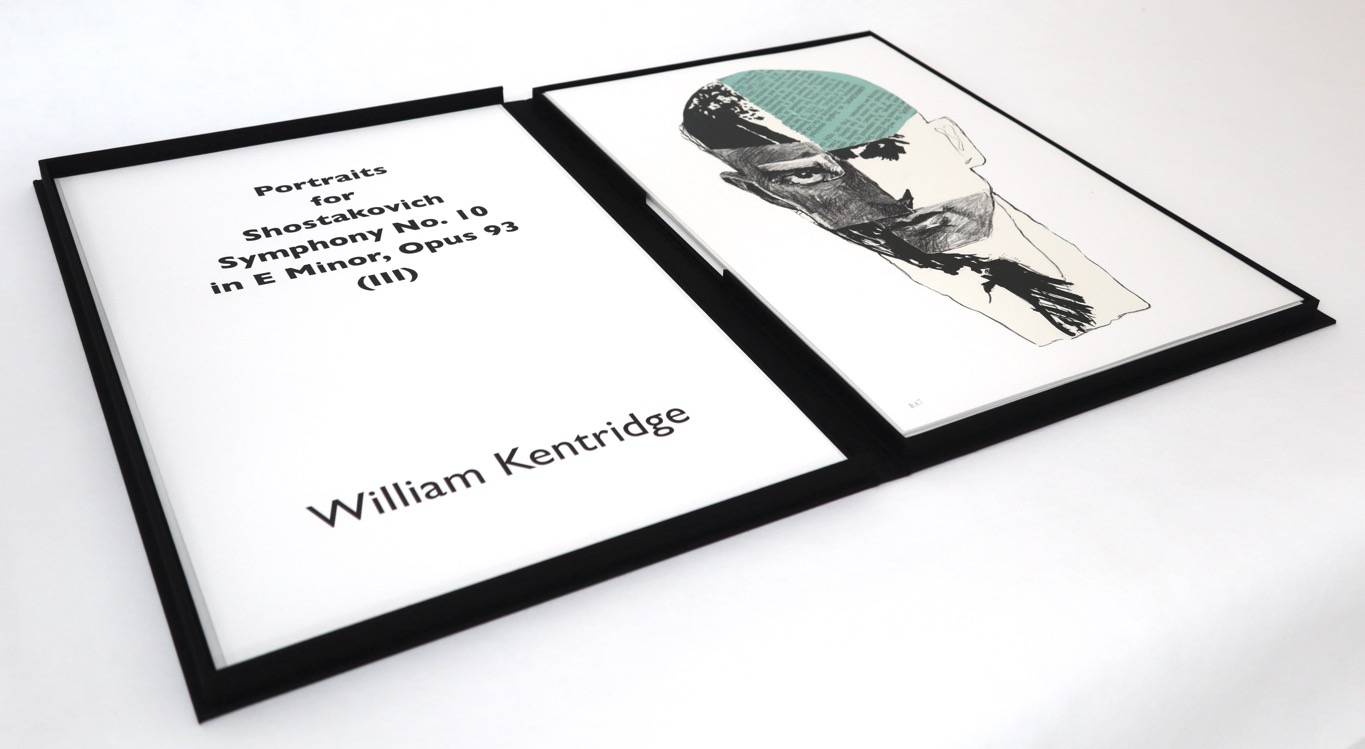
Title: Portraits for Shostakovich Symphony No.10 in E Minor, Opus 93 (III)
Medium: Multiple colour lithograph, collage and chine collé in nine panels adhered to cotton fabric presented in a clamshell box
Size: 165.4 x 111.5 cm
Edition size: 20
Price on request
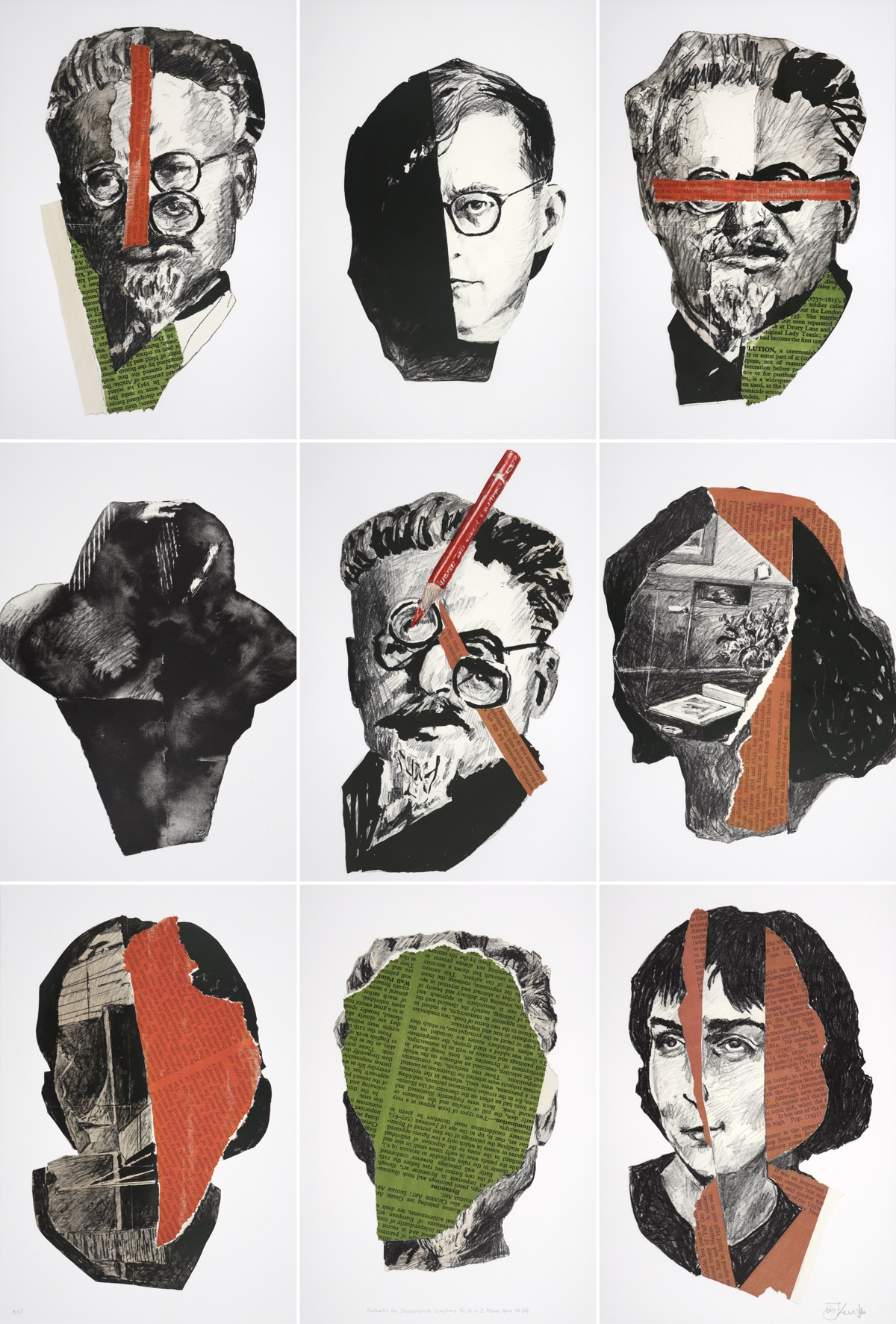
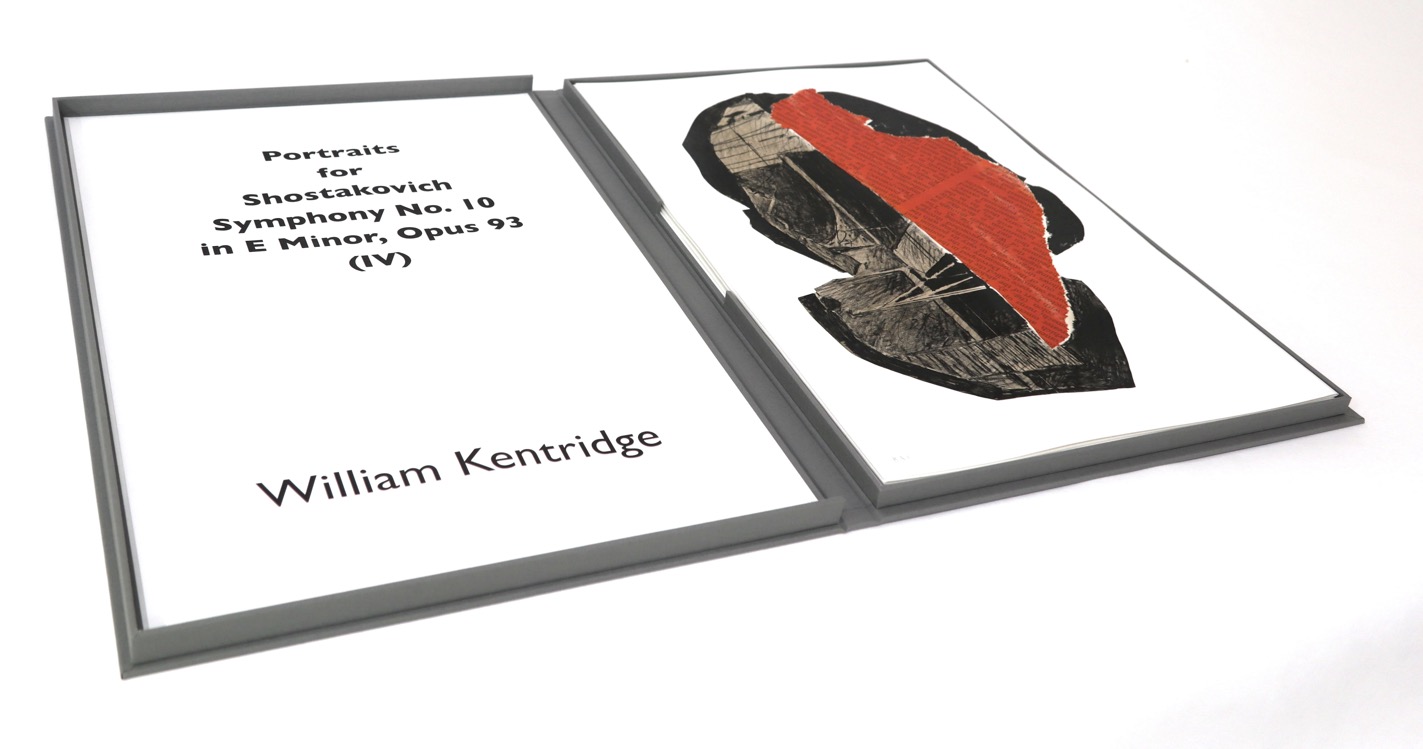
Title: Portraits for Shostakovich Symphony No.10 in E Minor, Opus 93 (IV)
Medium: Multiple colour lithograph, collage and chine collé in nine panels adhered to cotton fabric presented in a clamshell box
Size: 165.4 x 111.5 cm
Edition size: 20
Price on request
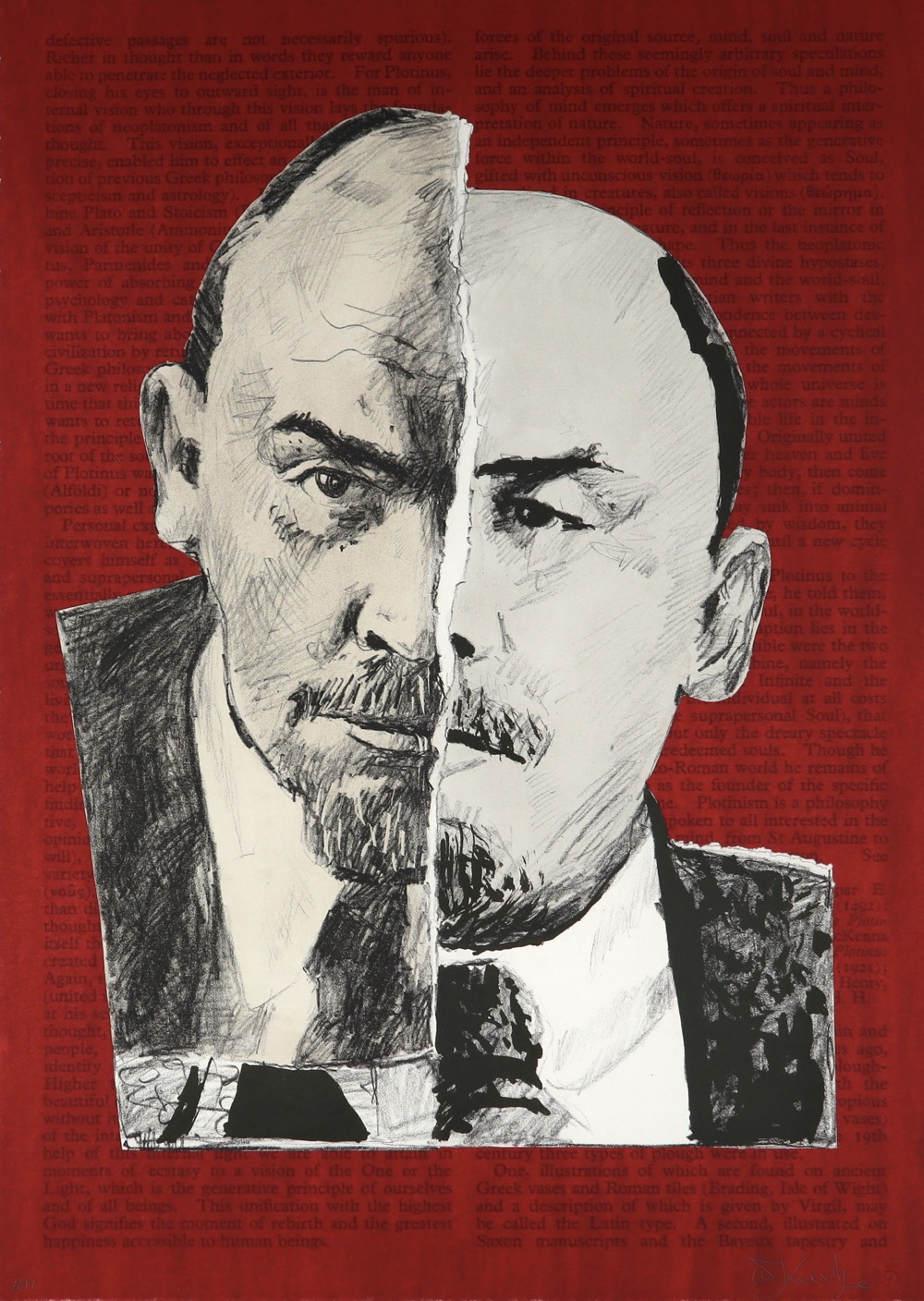
Title: Vladimir L: I
Medium: Five colour lithograph and collage with staining
Paper size: 57 x 40 cm
Image size: 57 x 40 cm
Edition size: 20
Price on request
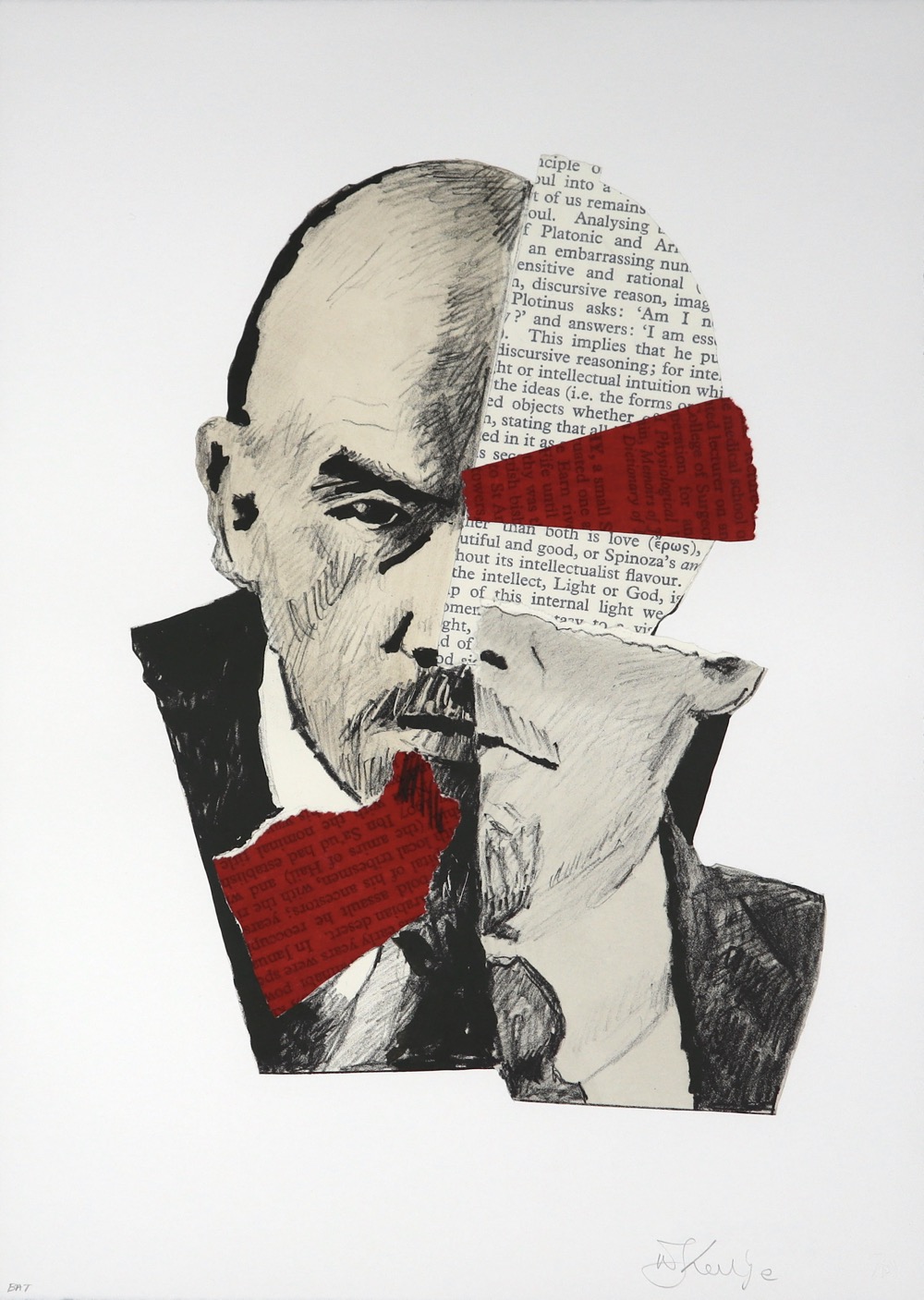
Title: Vladimir L: II
Medium: Seven colour lithograph and collage with staining
Paper size: 57 x 40 cm
Image size: 43.5 x 32.5 cm
Edition size: 20
Price on request
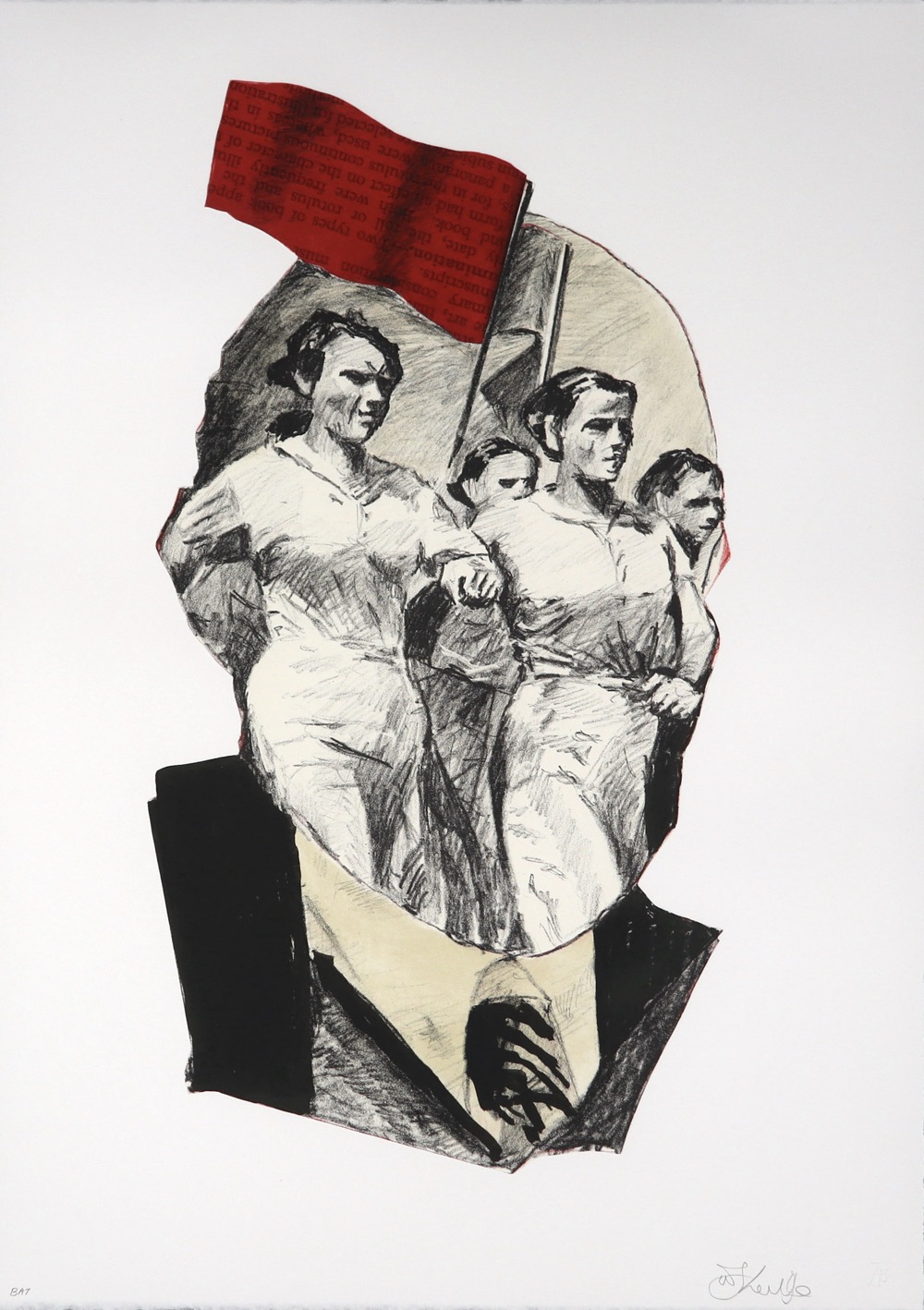
Title: Vladimir L: III
Medium: Seven colour lithograph and collage
Paper size: 57 x 40 cm
Image size: 47.2 x 25.2 cm
Edition size: 20
Price on request
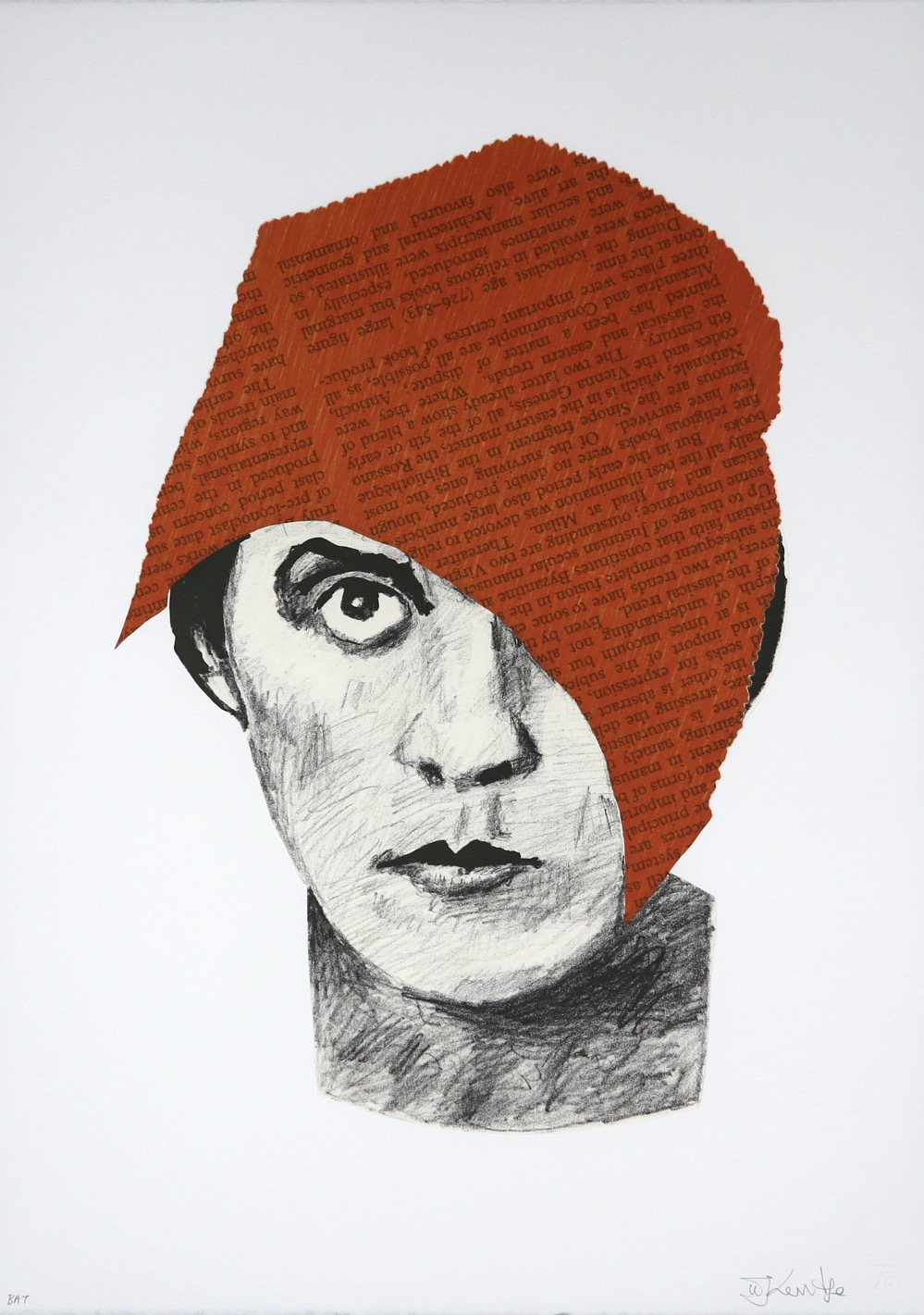
Title: Lily: I
Medium: Five colour lithograph and collage
Paper size: 57 x 40 cm
Image size: 43 x 29 cm
Edition size: 20
Price on request
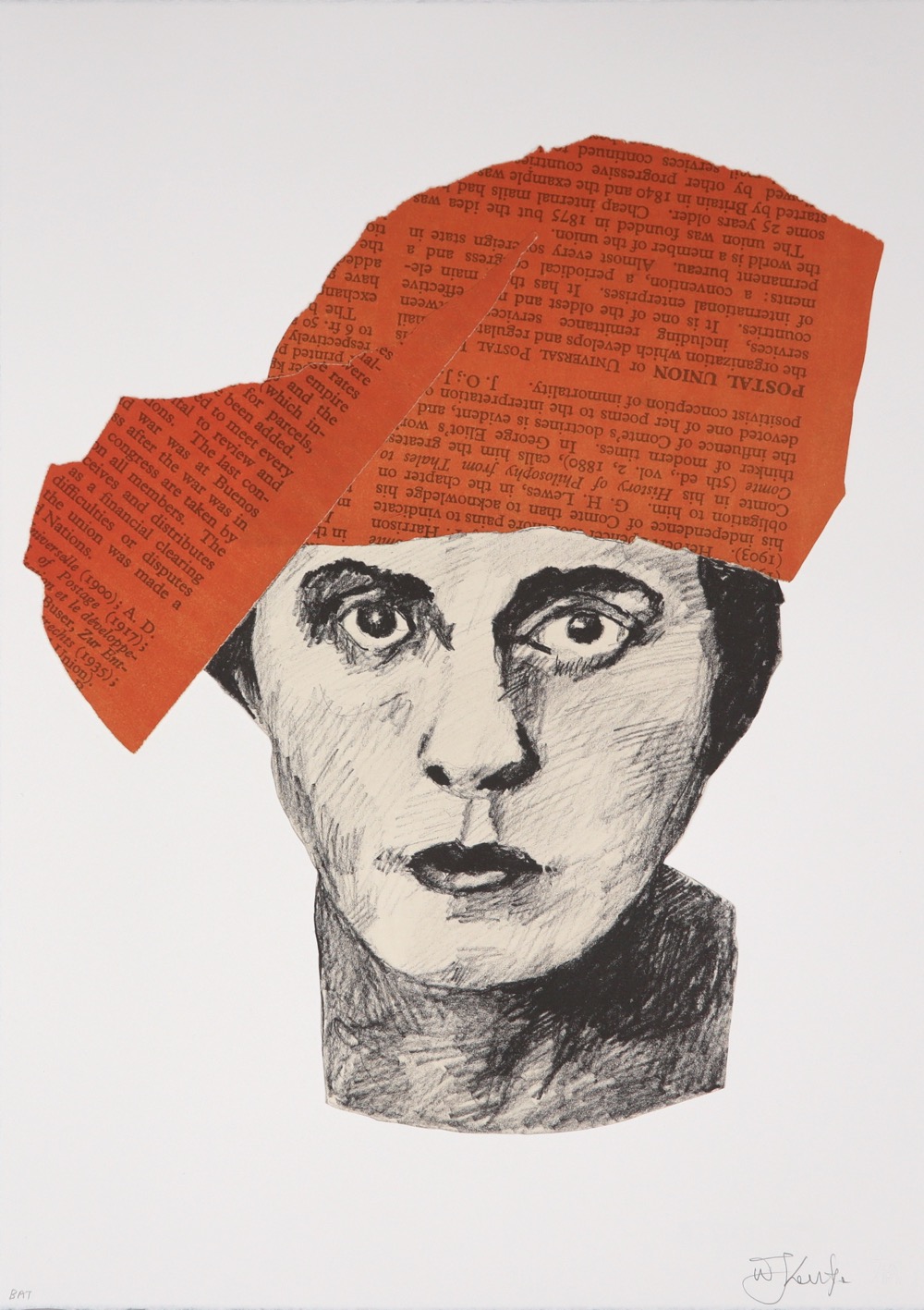
Title: Lily: II
Medium: Four colour lithograph and collage with staining
Paper size: 57 x 40 cm
Image size: 43 x 37 cm
Edition size: 20
Price on request
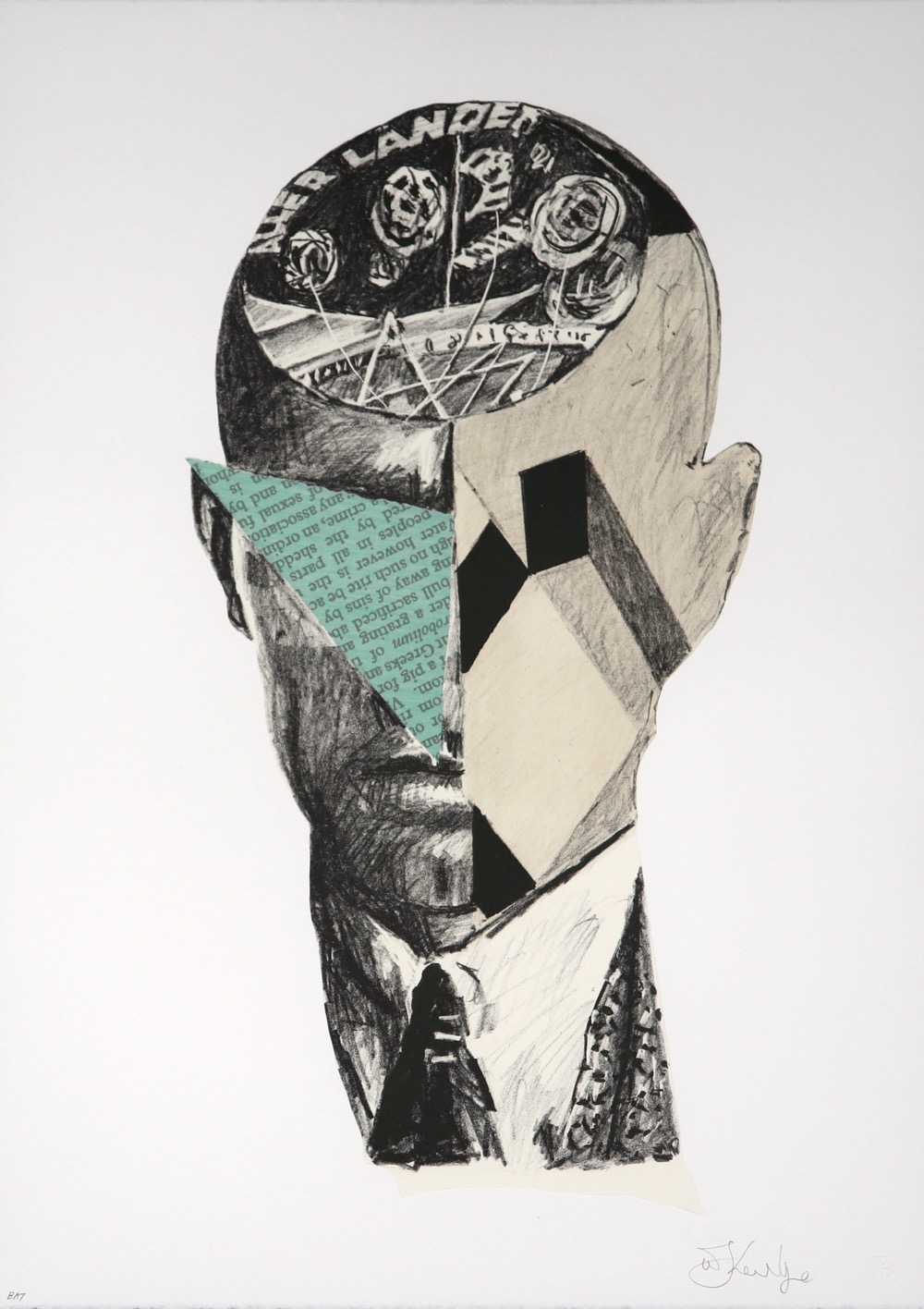
Title: Vladimir M: I
Medium: Five colour lithograph and collage with staining
Paper size: 57 x 40 cm
Image size: 48.2 x 25 cm
Edition size: 20
Price on request
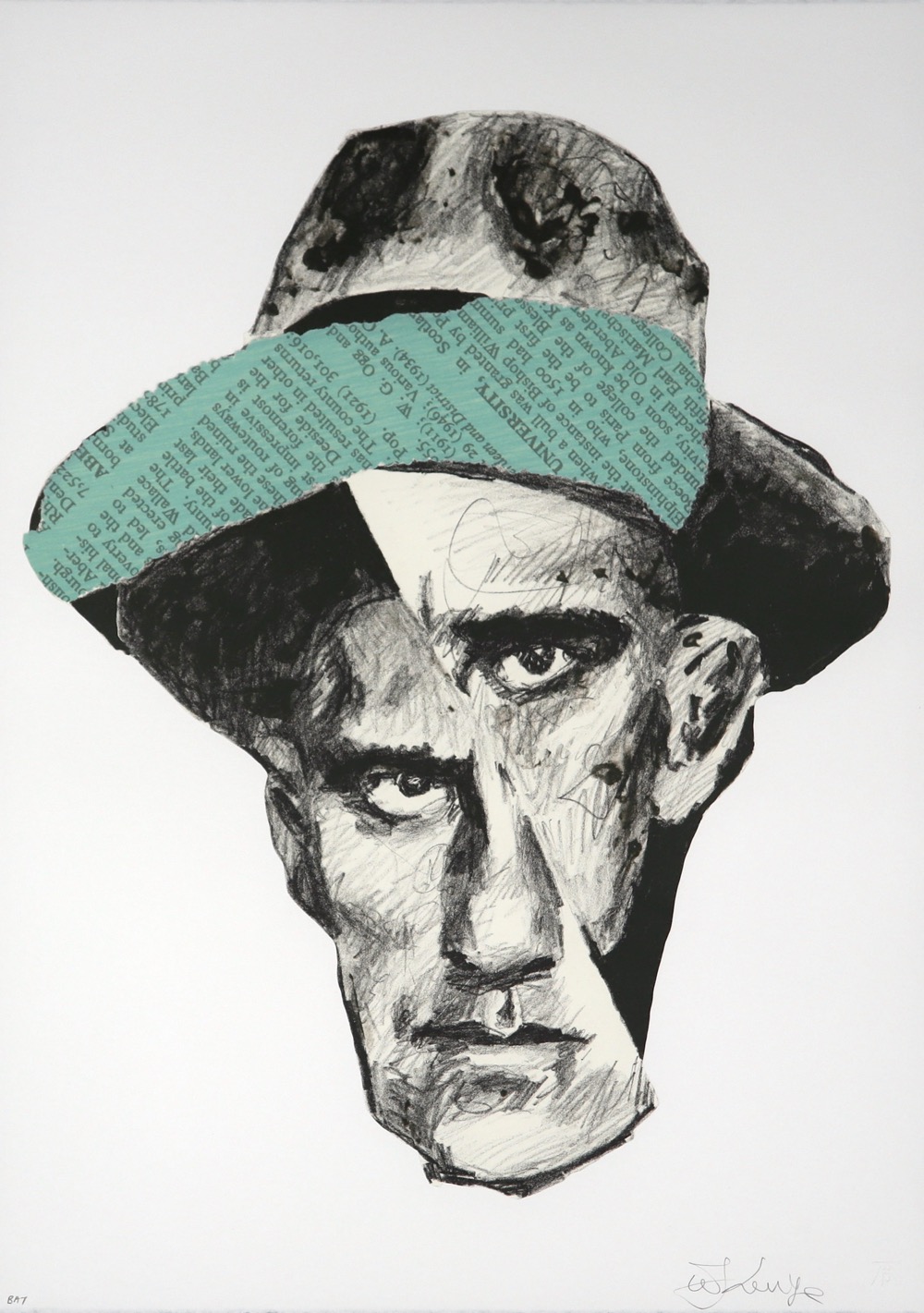
Title: Vladimir M: II
Medium: Five colour lithograph and collage
Paper size: 57 x 40 cm
Image size: 47 x 37.4 cm
Edition size: 20
Price on request
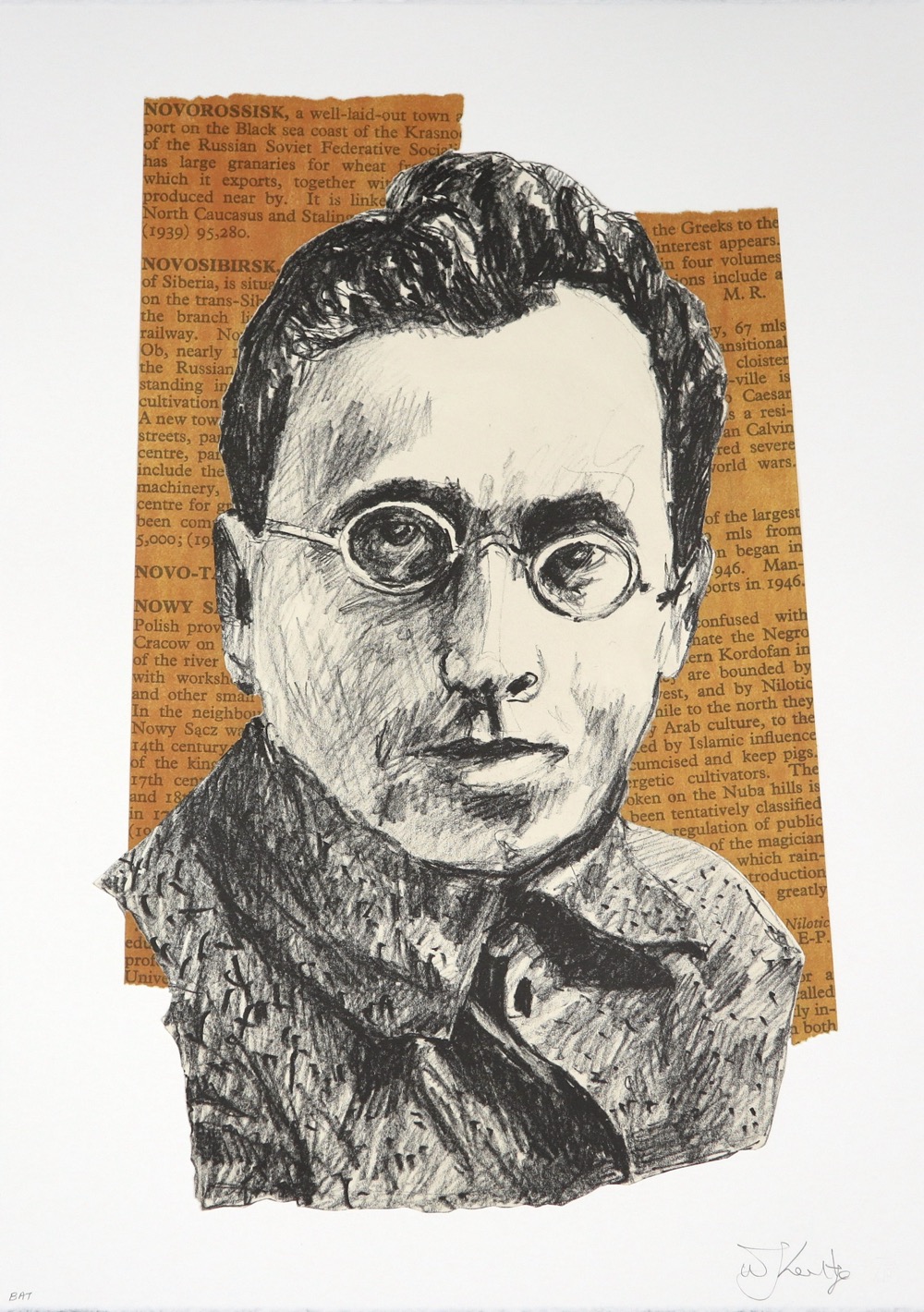
Title: Politburo
Medium: Four colour lithograph and collage with staining
Paper size: 57 x 40 cm
Image size: 48.2 x 32 cm
Edition size: 20
Price on request
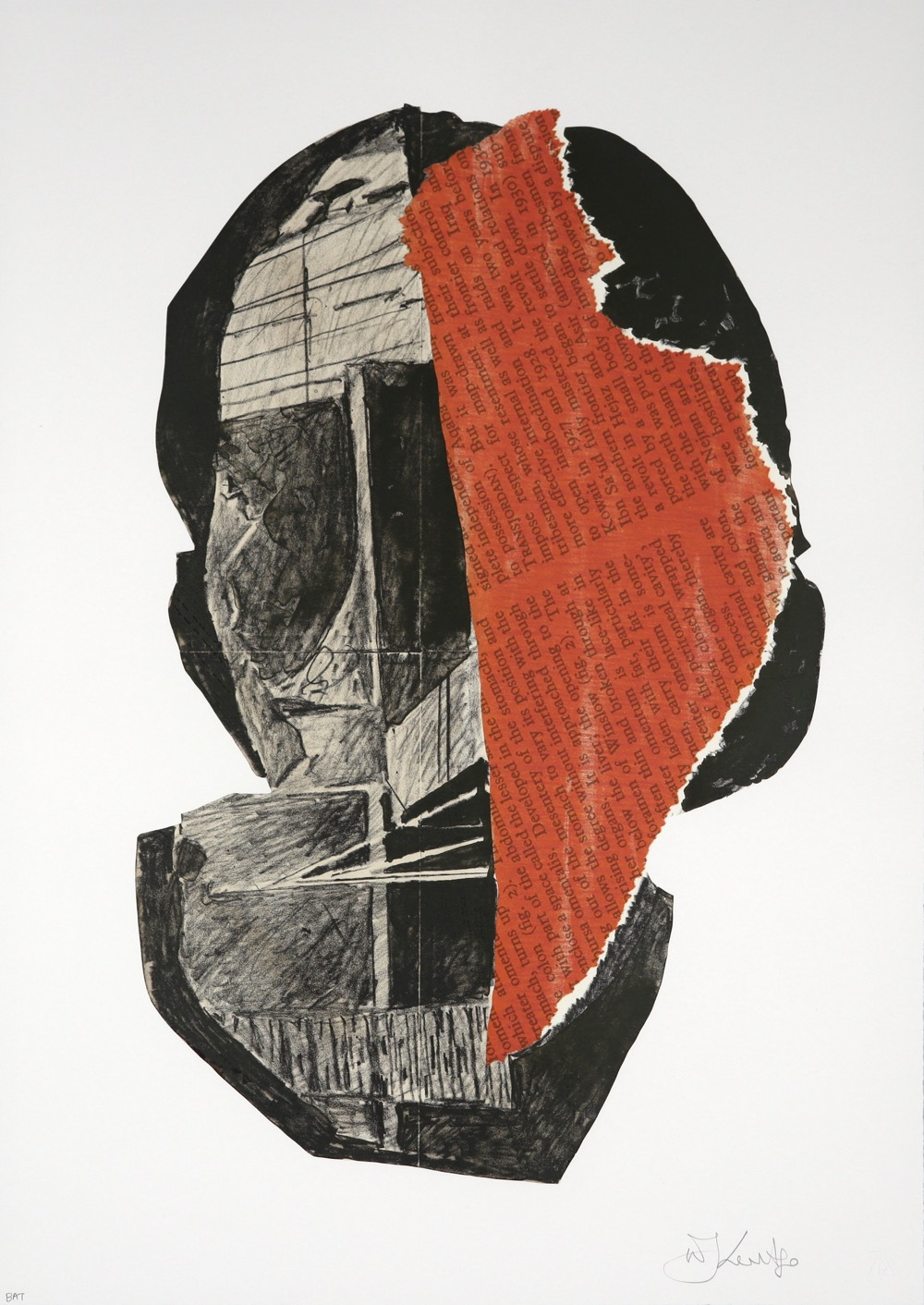
Title: Elmira: I
Medium: Five colour chine collé lithograph with staining
Paper size: 57 x 40 cm
Image size: 46.8 x 30 cm
Edition size: 20
Price on request
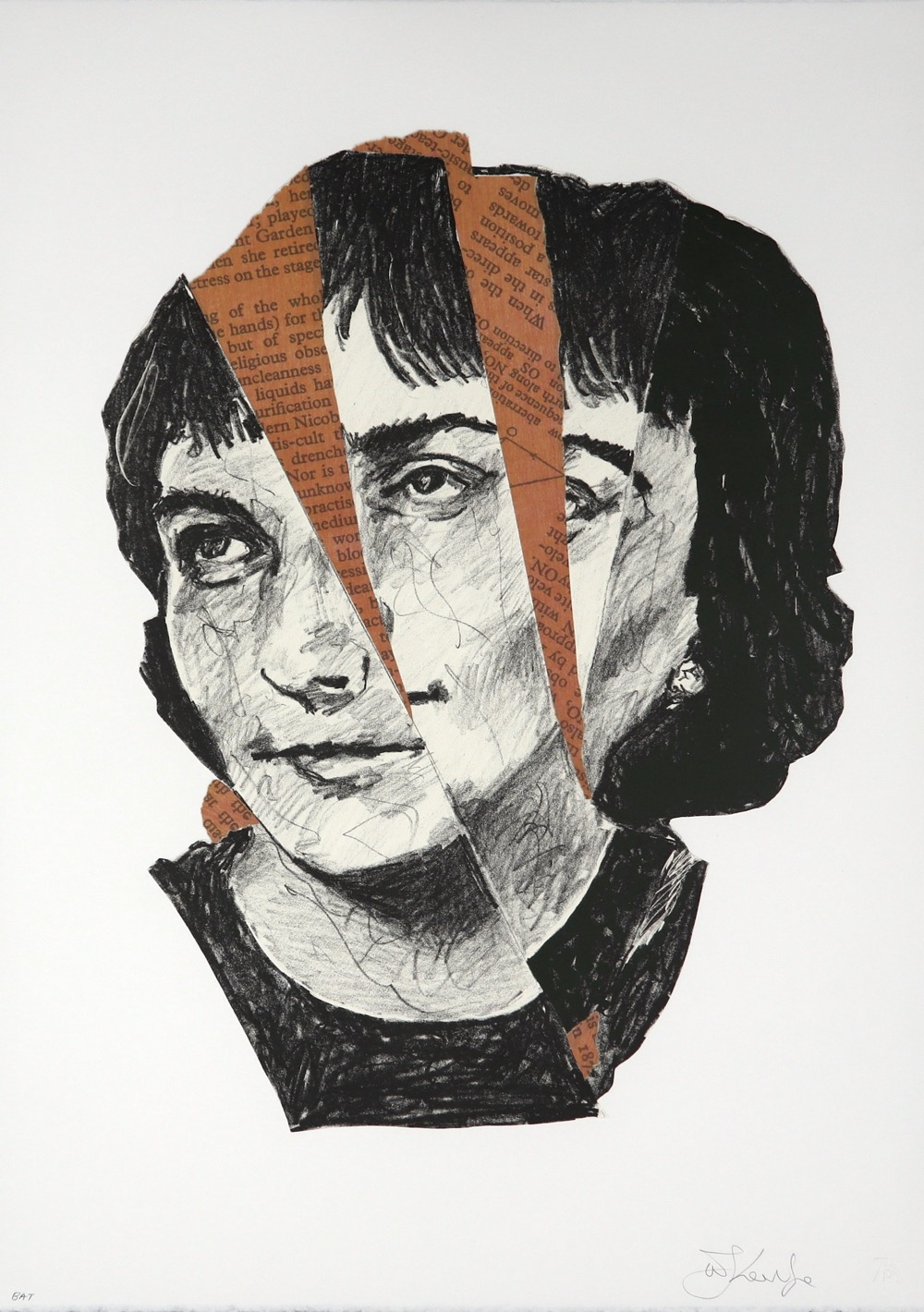
Title: Elmira: II
Medium: Five colour lithograph and collage
Paper size: 57 x 40 cm
Image size: 43.5 x 32.5 cm
Edition size: 20
Price on request
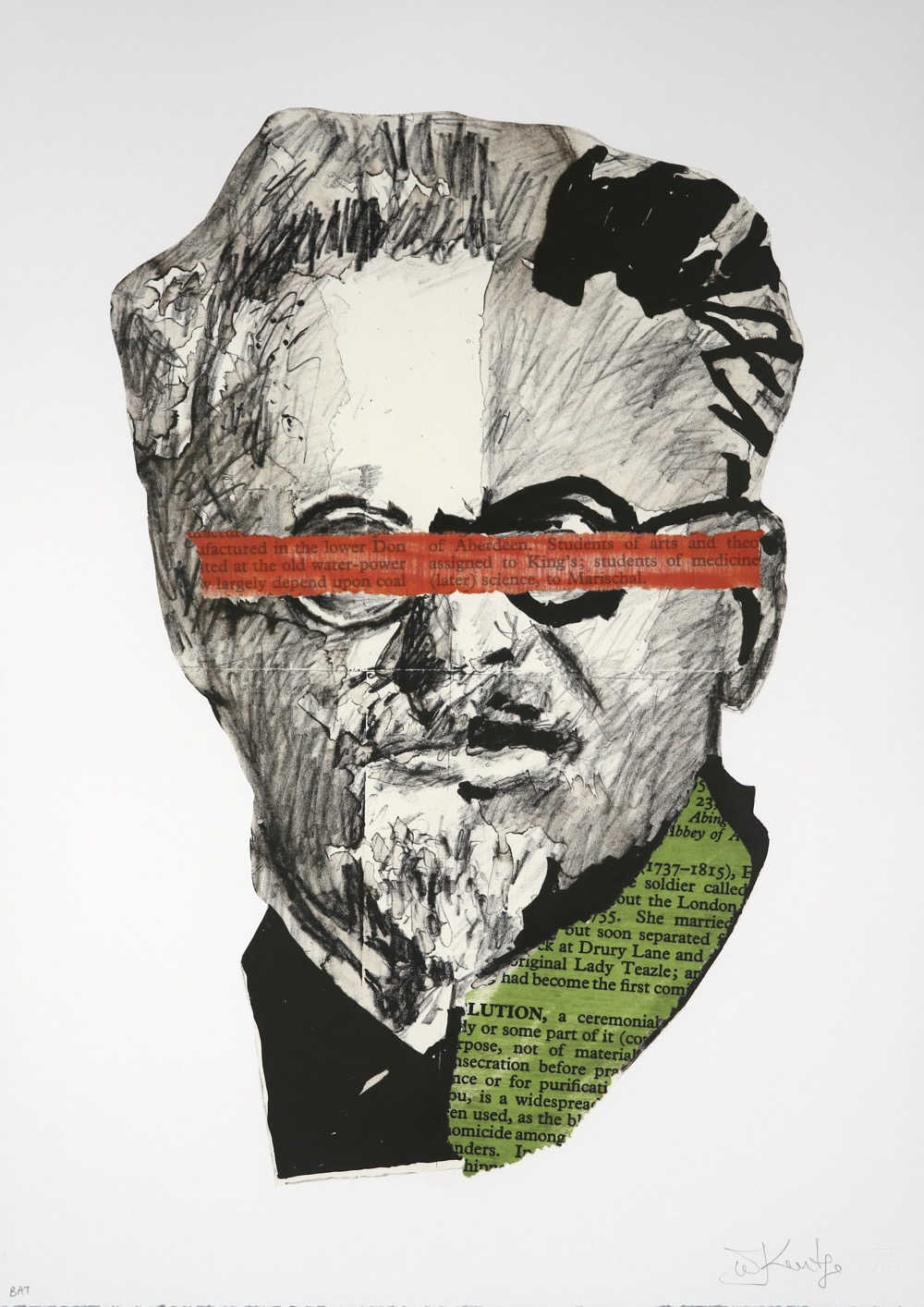
Title: Trotsky: I
Medium: Seven colour chine collé lithograph
Paper size: 57 x 40 cm
Image size: 46.8 x 30 cm
Edition size: 20
Price on request
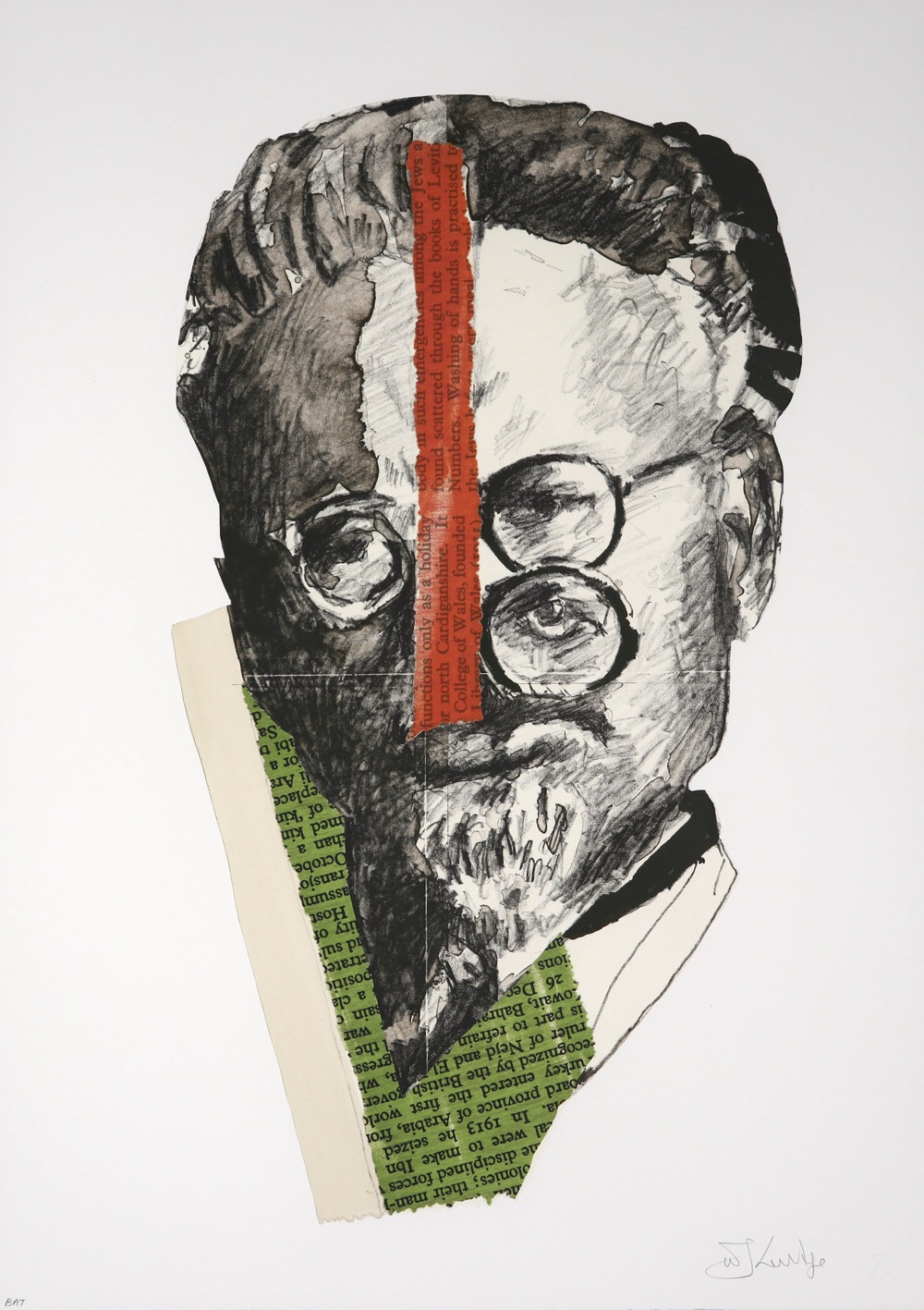
Title: Trotsky: II
Medium: Seven colour chine collé lithograph
Paper size: 57 x 40 cm
Image size: 48.8 x 27.5 cm
Edition size: 20
Price on request
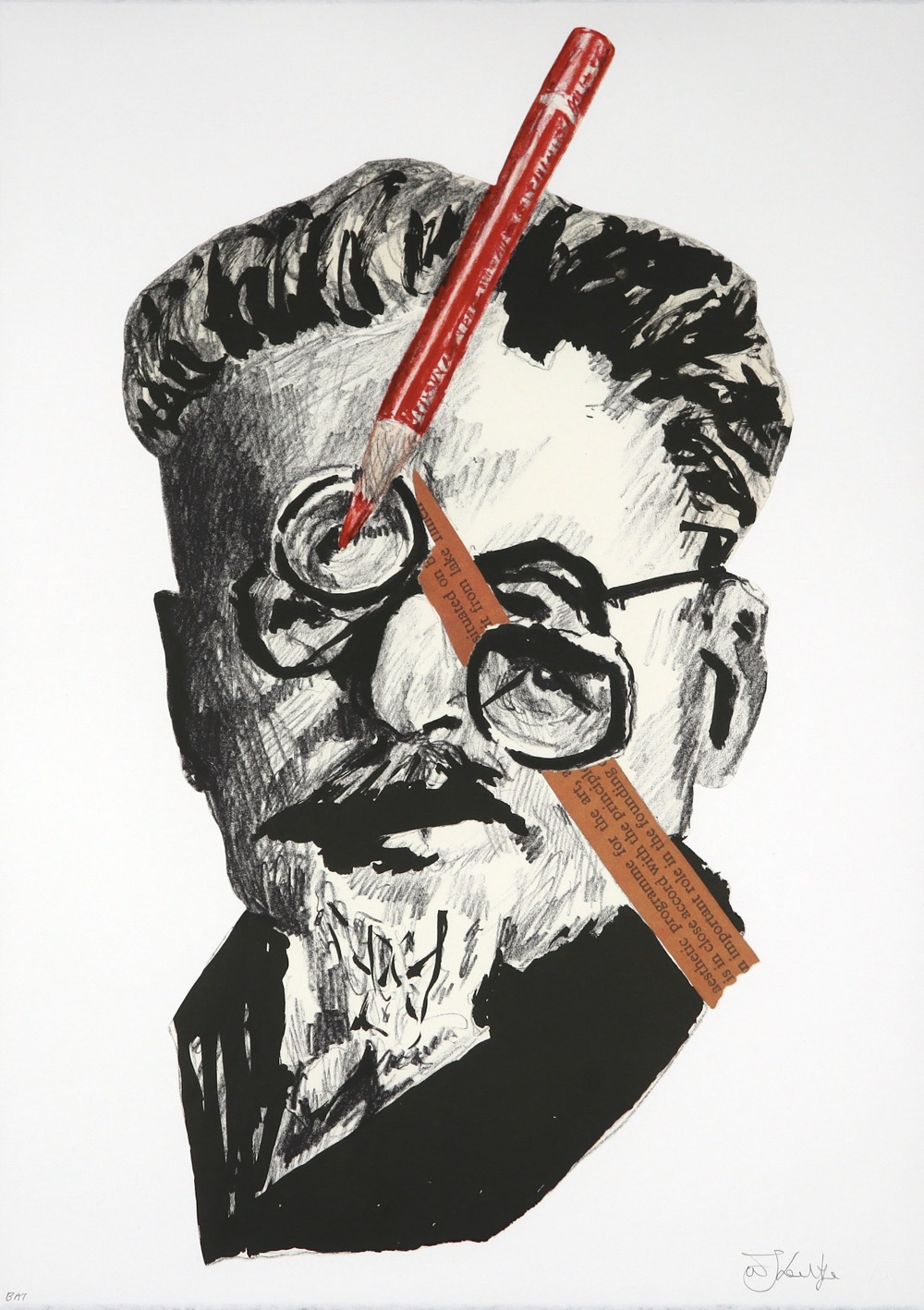
Title: Trotsky: III
Medium: Six colour lithograph and collage with staining
Paper size: 57 x 40 cm
Image size: 48.2 x 32 cm
Edition size: 20
Price on request
Kentridge drew 36 portraits of Soviet intellectuals, politicians and members of the cultural avant garde as part of his reflection on Shostakovich’s work. Key figures appear in multiple iterations. Known for breaking new musical ground in experimenting with contrast and ambivalent tonalities, Shostakovich composed music under the pressure of Soviet controls on art. In its experimentation, his 10th Symphony violated many of these restrictions and was only made public once Stalin died. Kentridge is interested the Soviet project as an expression of a failed utopia. Utopian ideals are necessary to release intellect, ideas and energy. The characters in the film were all participants in the politics and culture of their time and embody the simultaneous hope in revolutionary ideals and the disillusionment of their failure in the lived world.
The print collaboration process began with taking grained film (which has a surface texture similar to a litho stone) and drawing and painting materials to Kentridge at his Johannesburg studio where he drew each colour on a separate film, working from collages that he had made. The grained film drawings were exposed onto aluminium printing plates and were then printed by hand at The Artists’ Press. To build up the black tones, two different plates were used, a warm black and a cold black. Some of the prints have as many as seven colours, which means that Kentridge drew seven different separations for them, and they have gone through the press seven times. Once printed, each print was torn down by hand into its individual collage pieces. We used templates to do this to get the exact same tear that Kentridge had made. Some of the prints were stained with watercolour paint by hand. Using grids, the pieces were carefully assembled into the faces and then adhered to the base sheet.
Watch William Kentridge's Slade Lecture at Oxford which explains Oh to Believe in Another World
Watch William Kentridge discussing Oh to Believe in Another World
William Kentridge Print and Artists' Book Archive of work done in collaboration with The Artists' Press.
Oh To Believe in Another World article in Wanted Magazine by James Sey
New Editions from The Artists' Press
Artists A - L (listed by surname)
Artists M - X (listed by surname)


